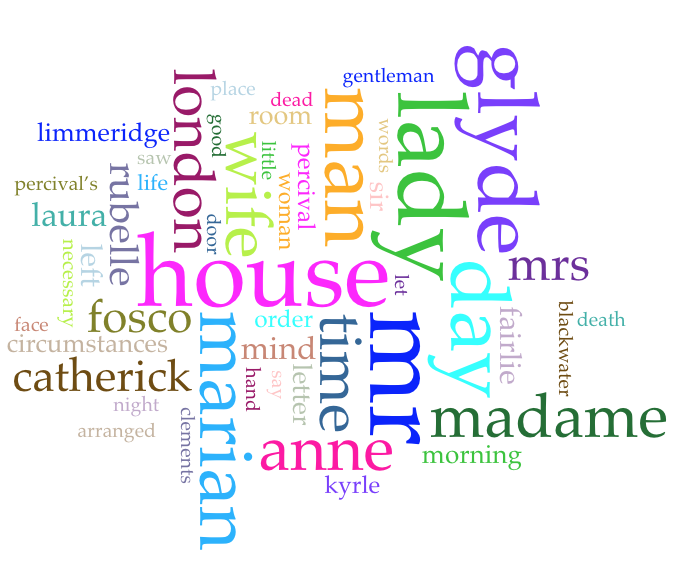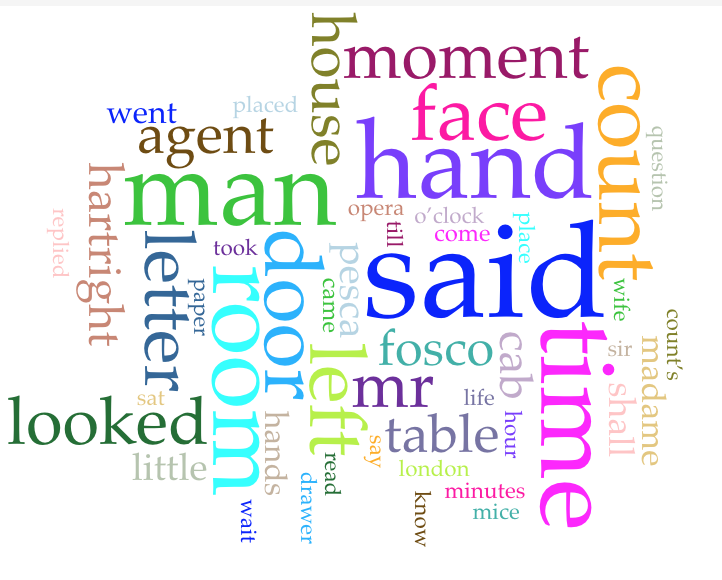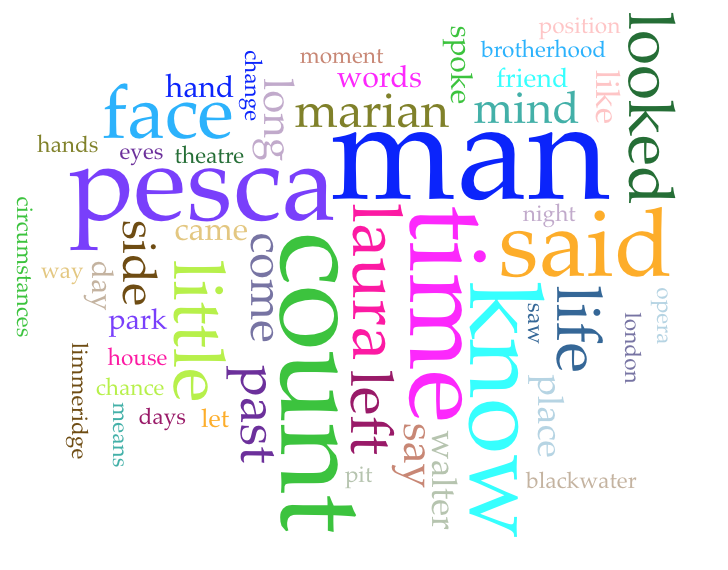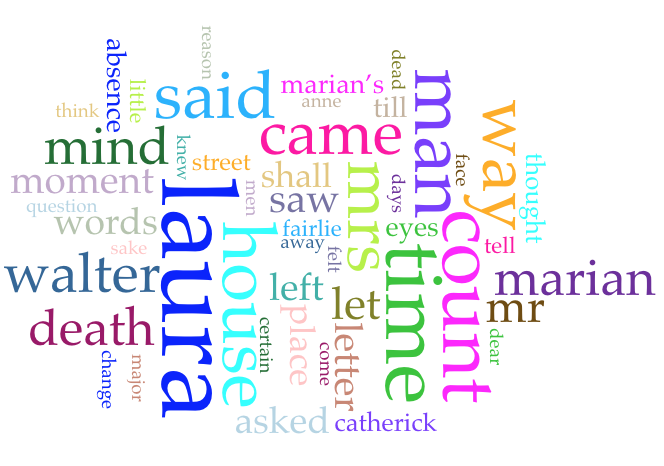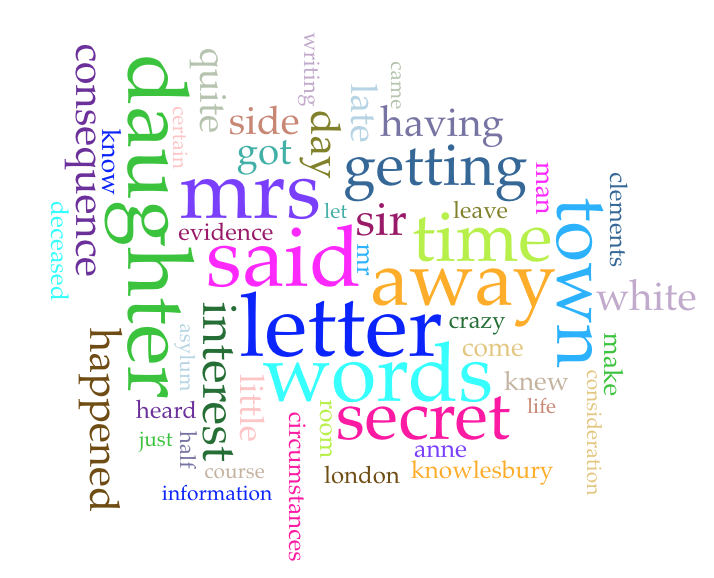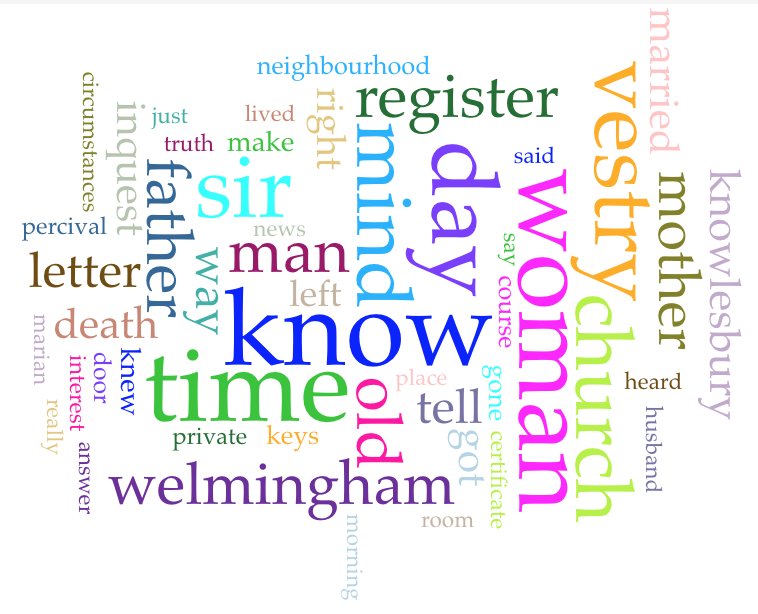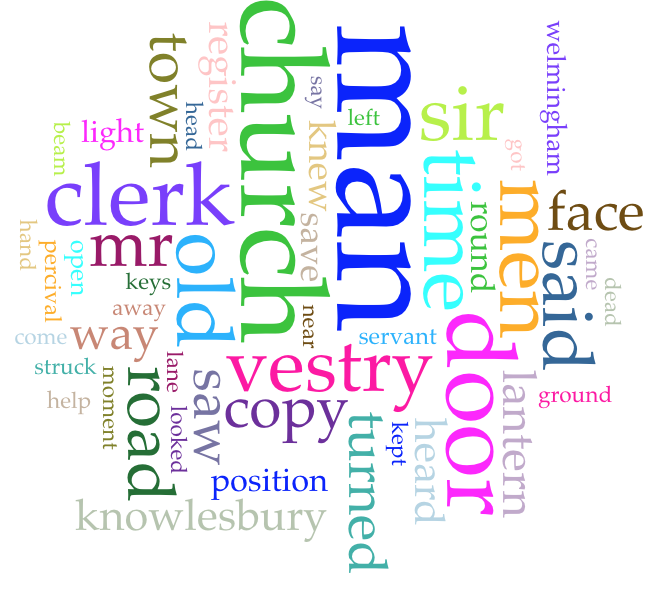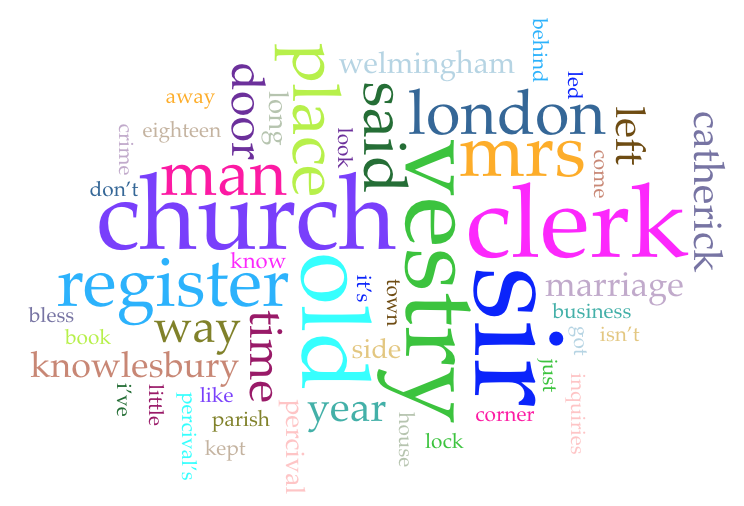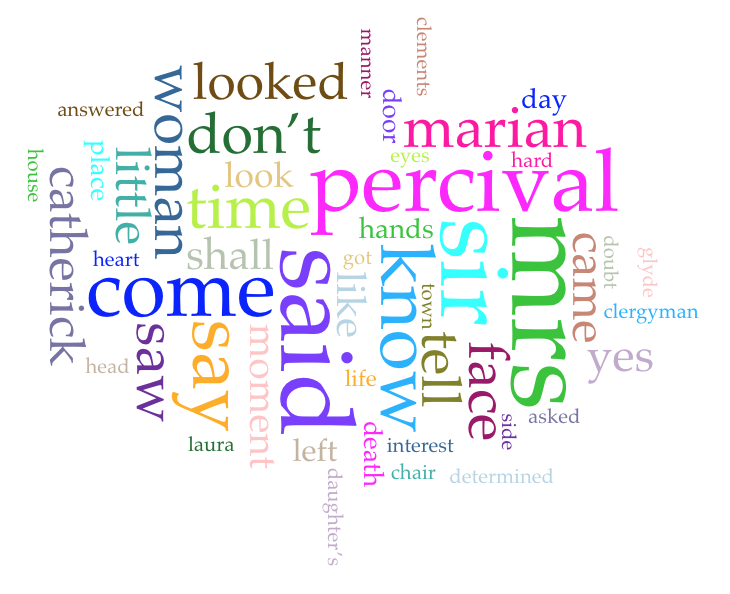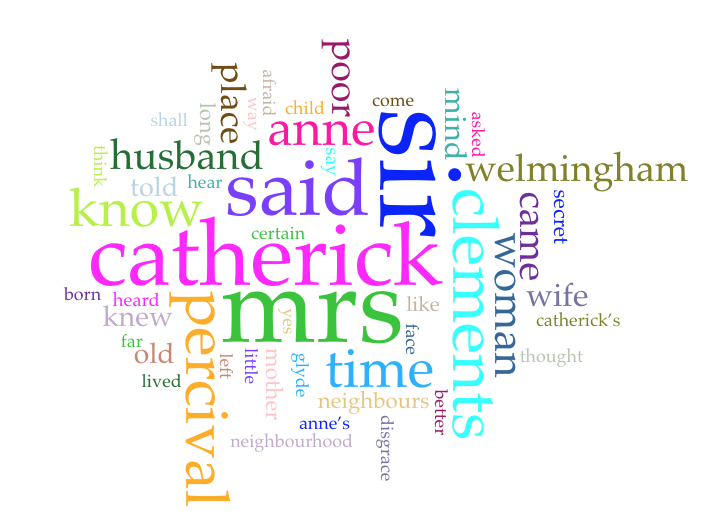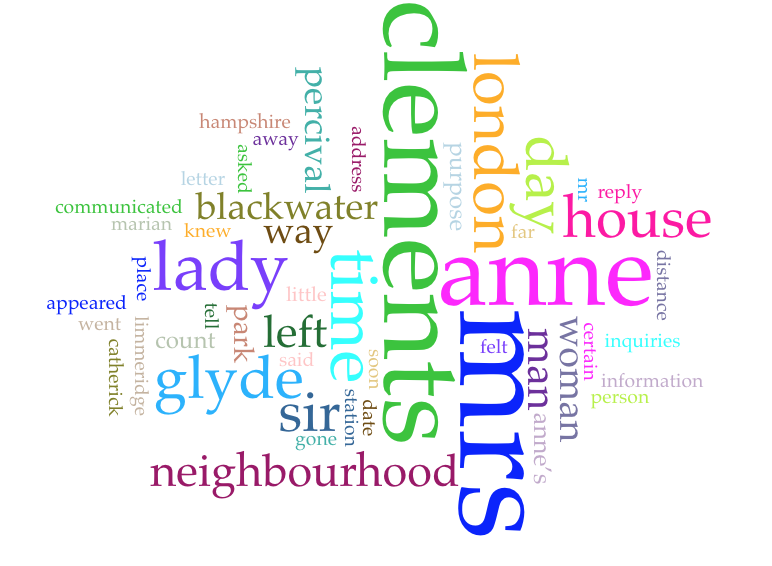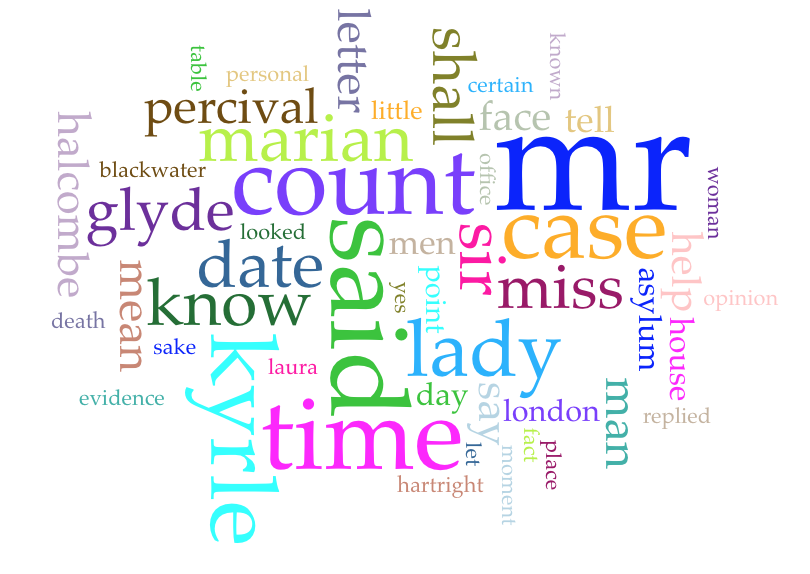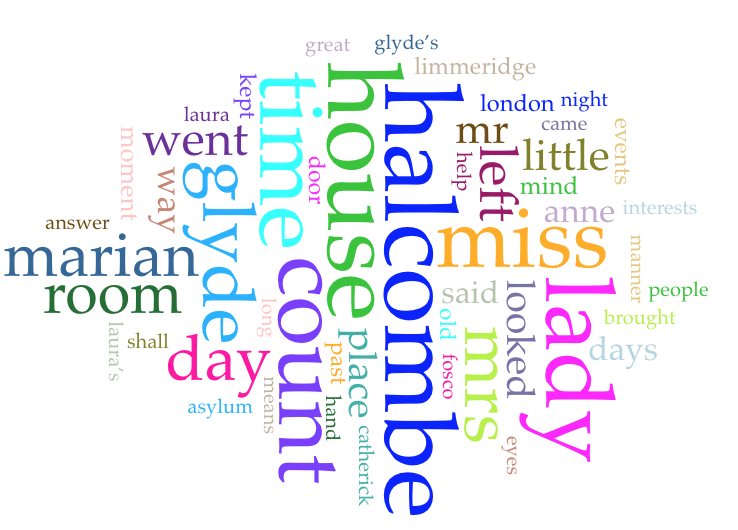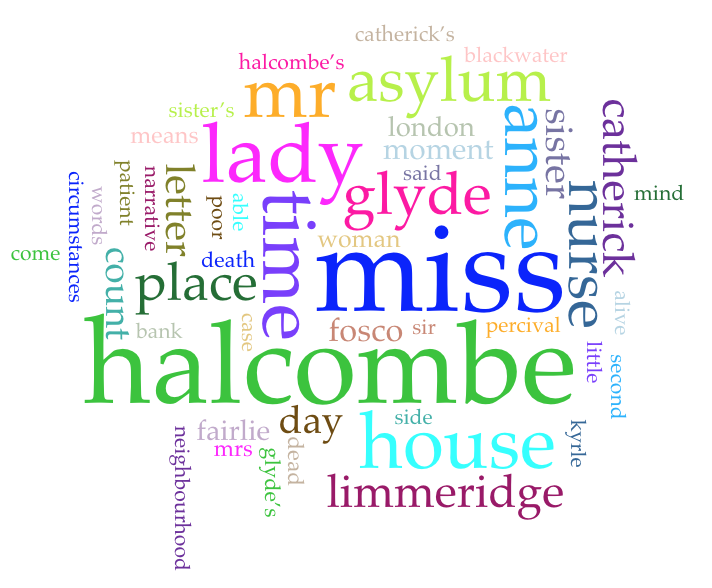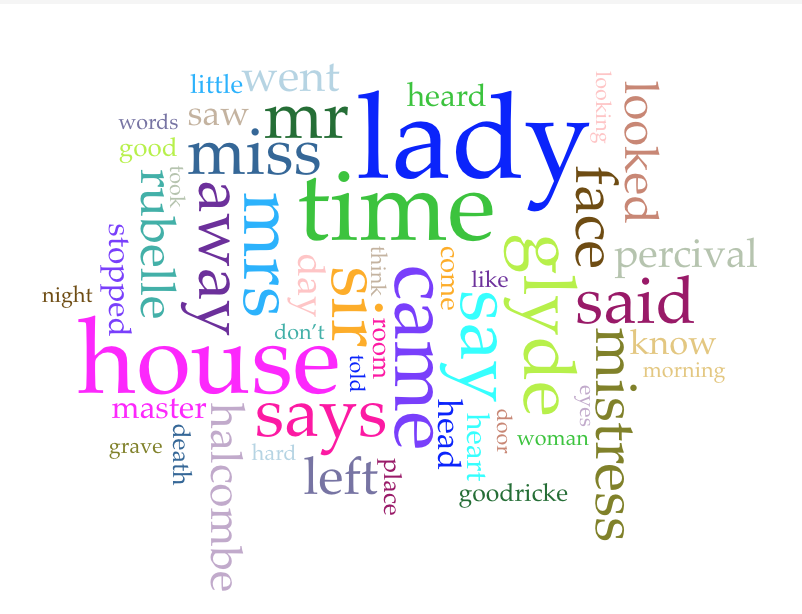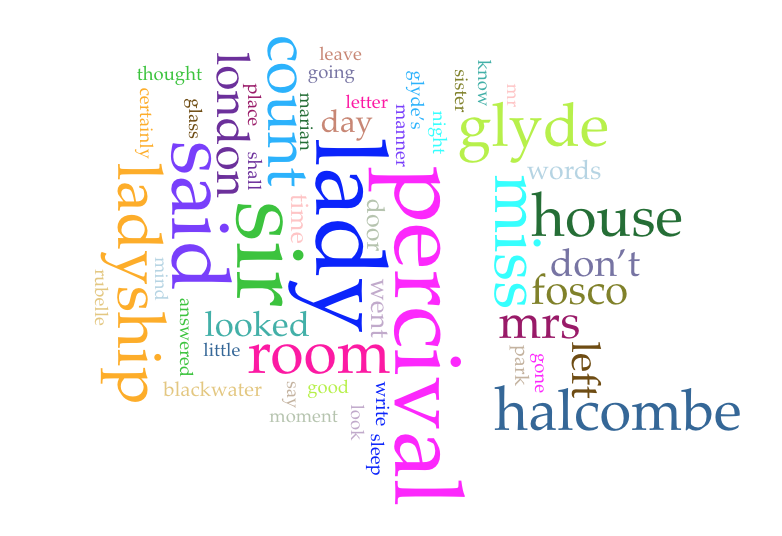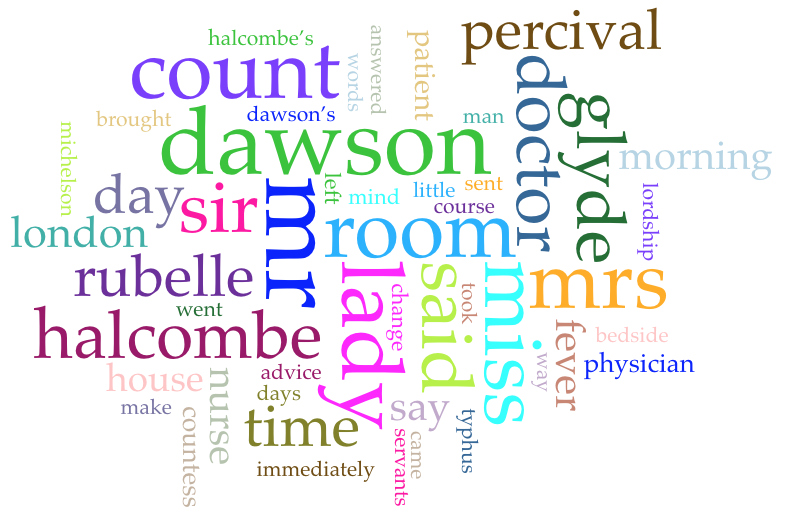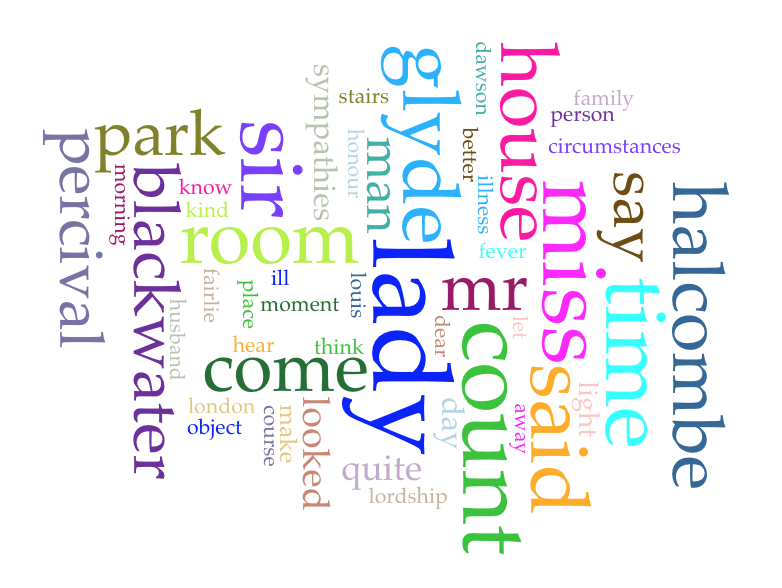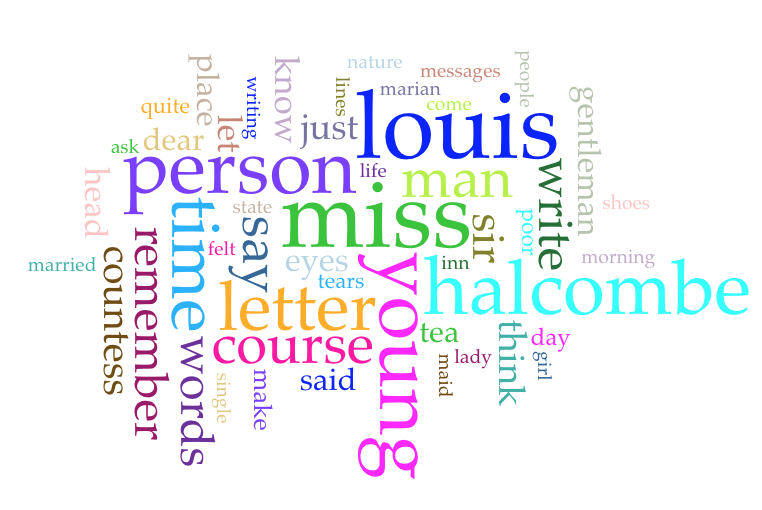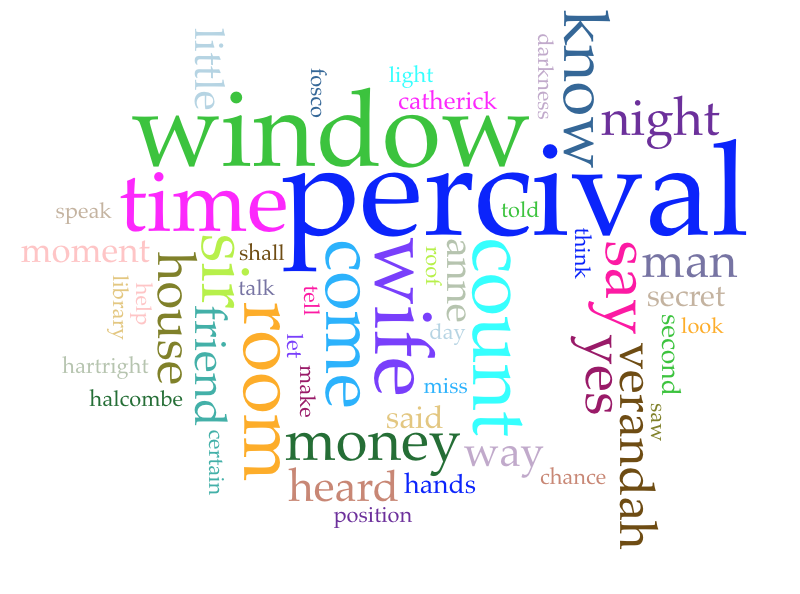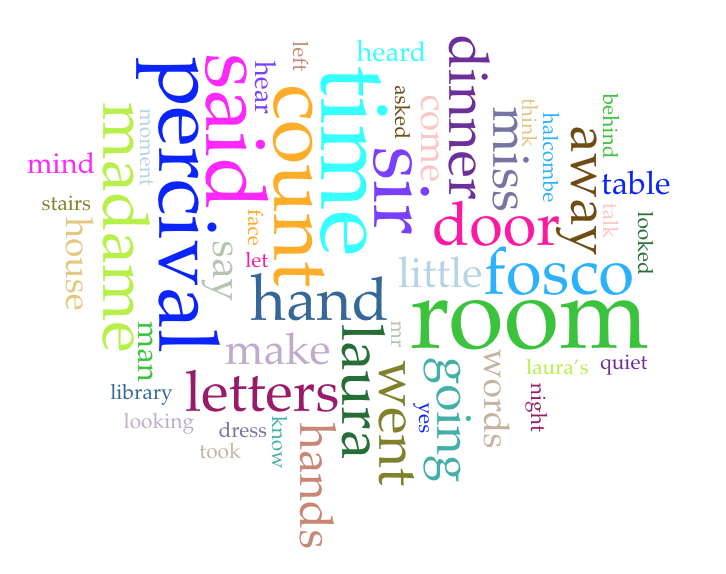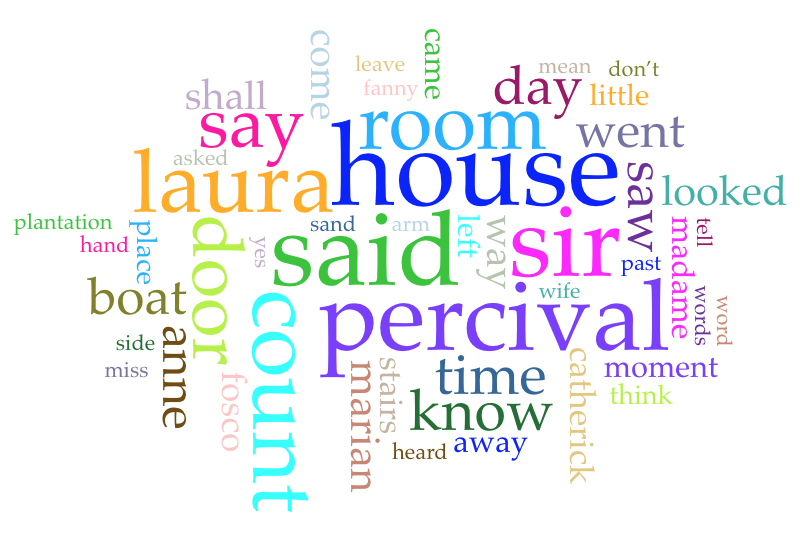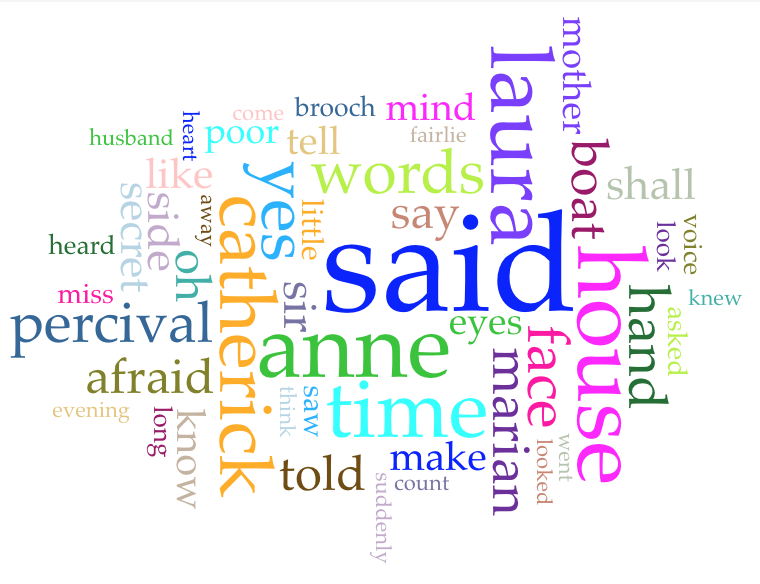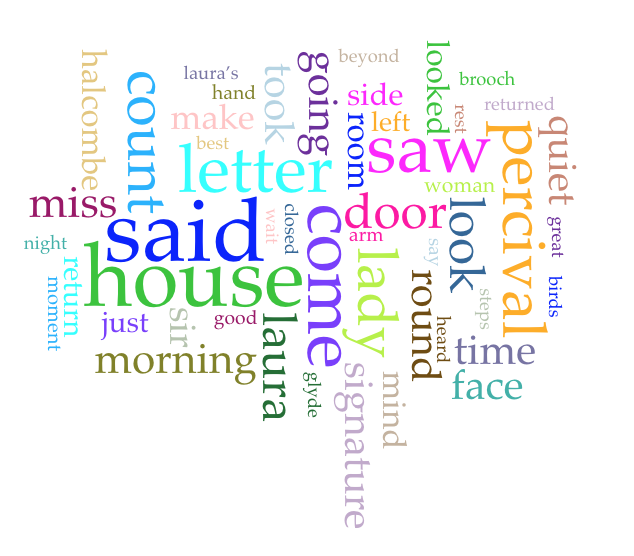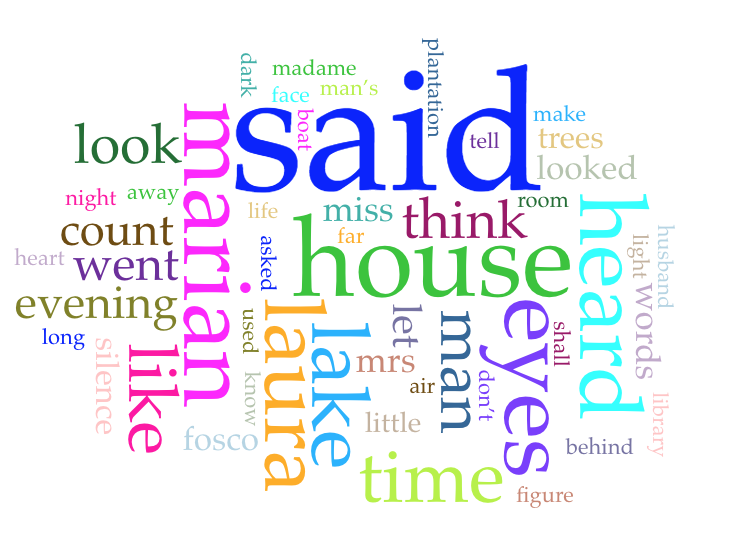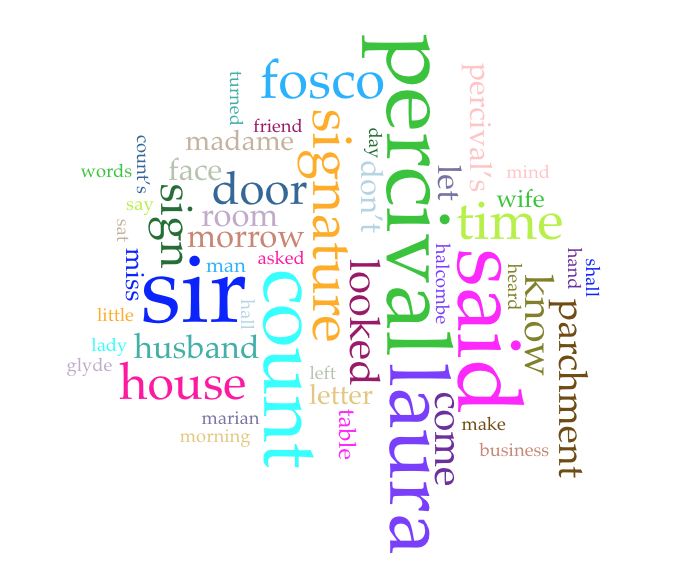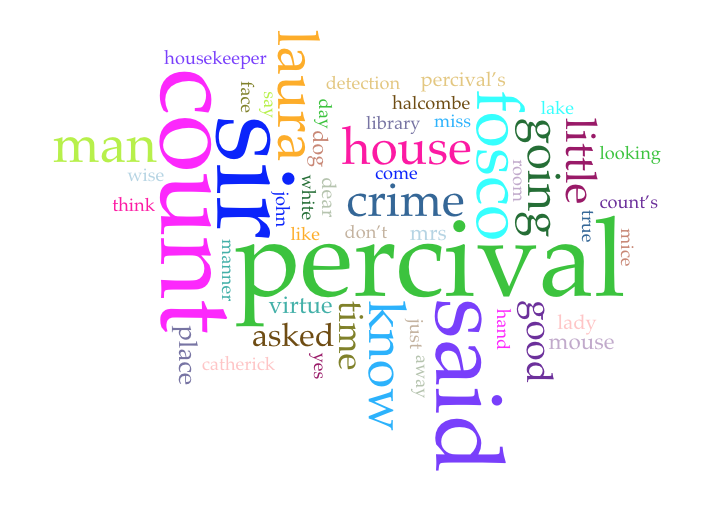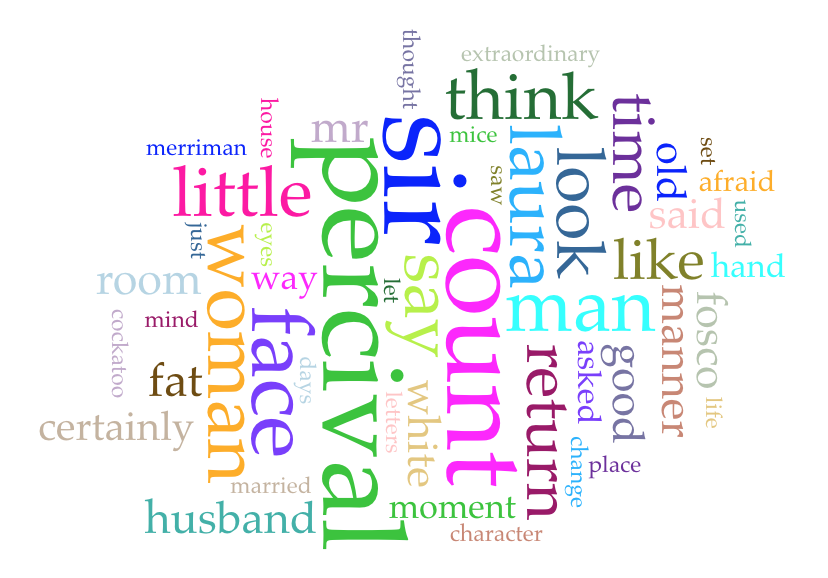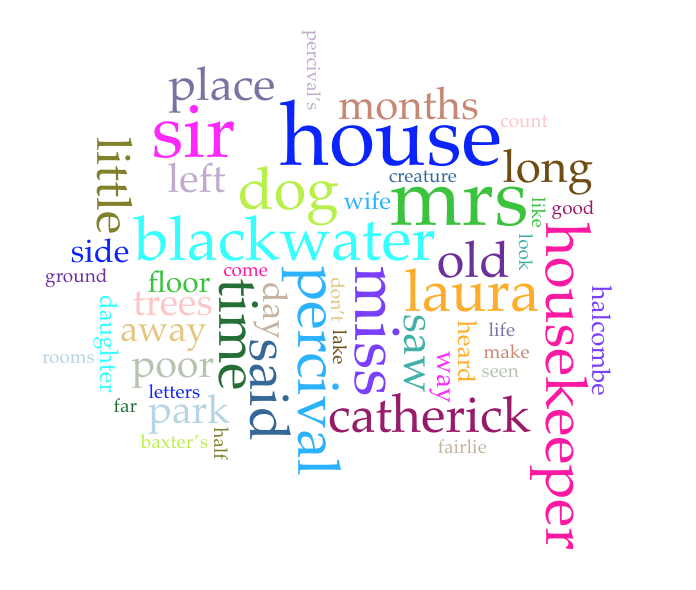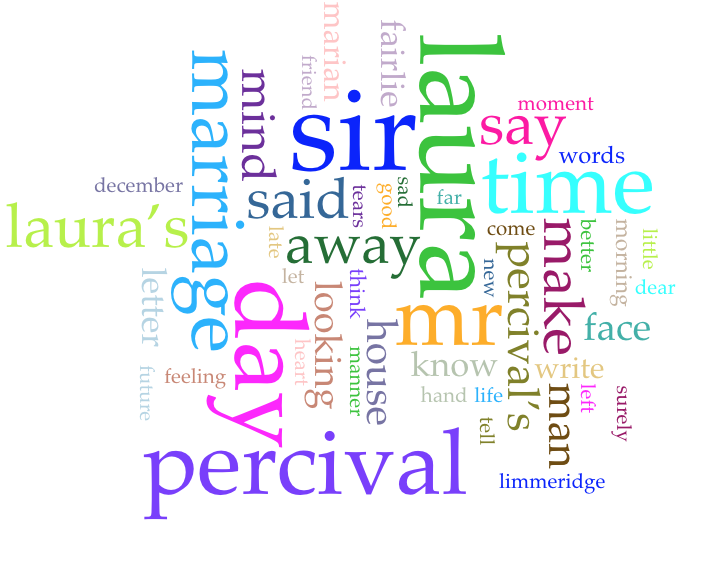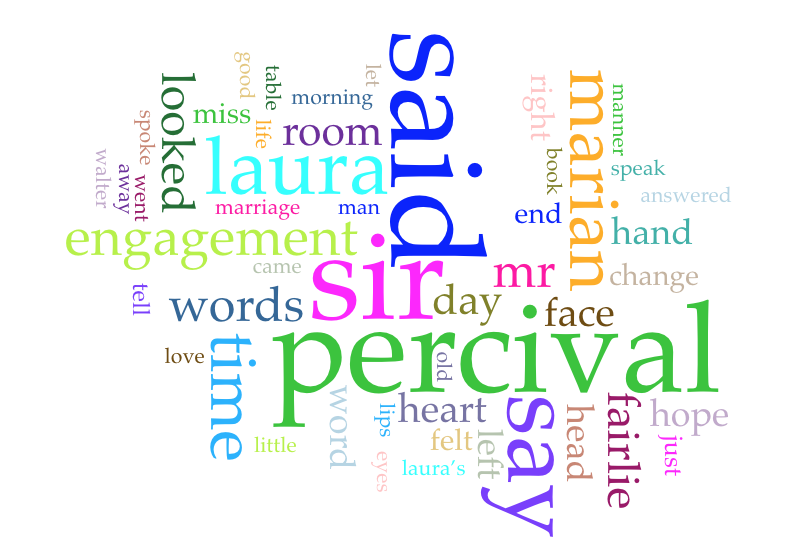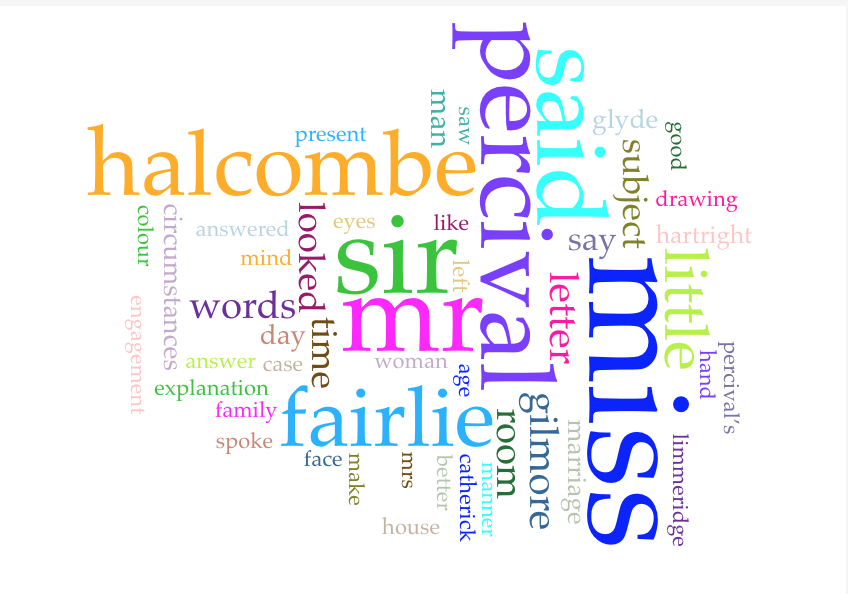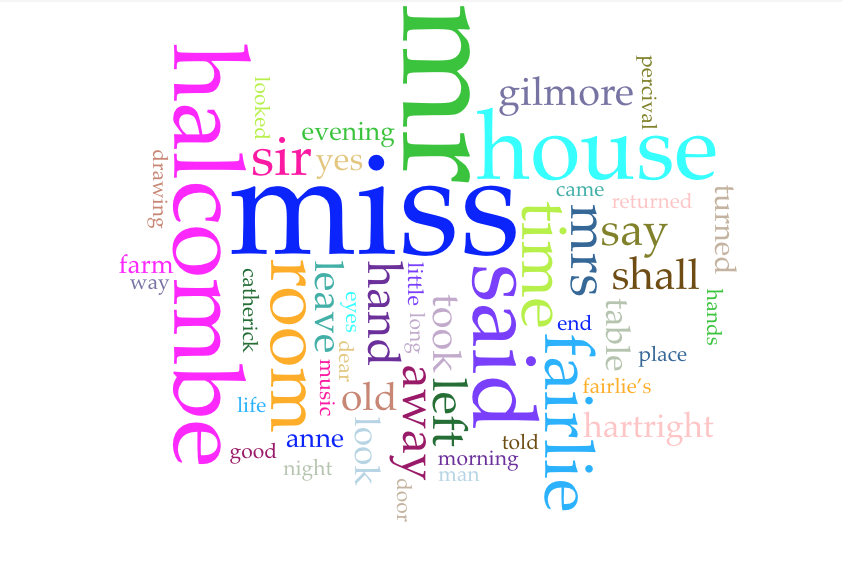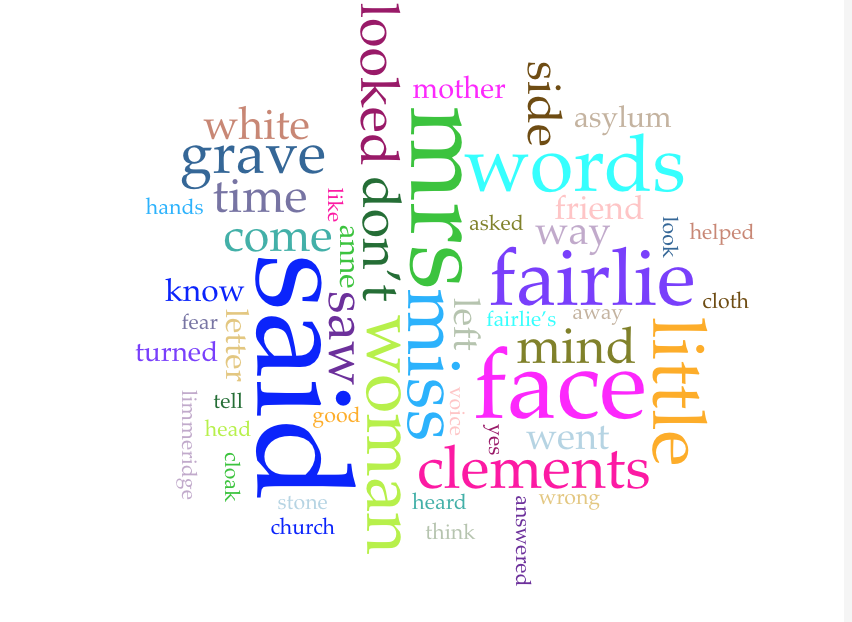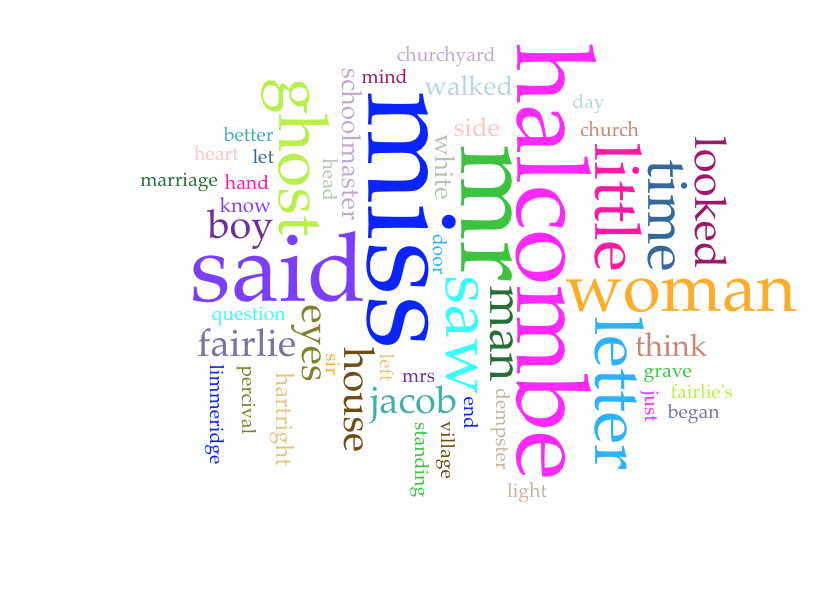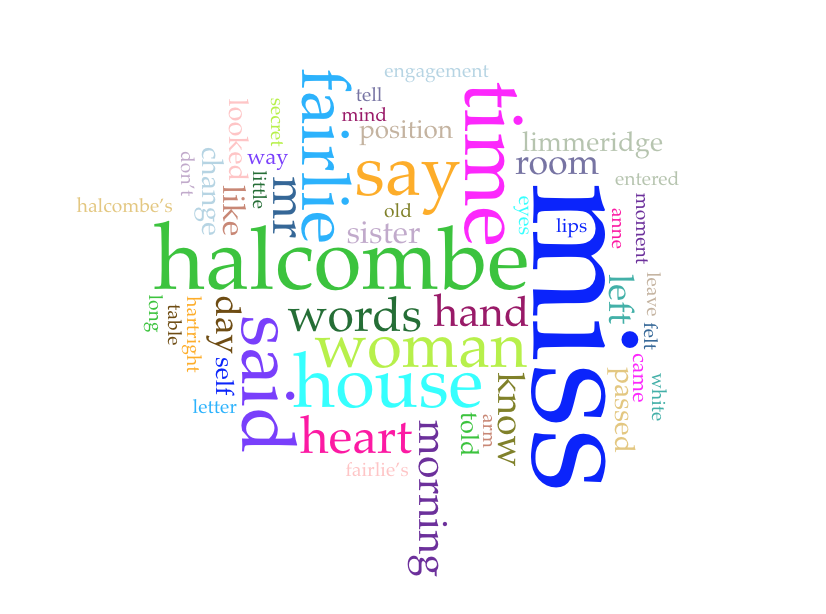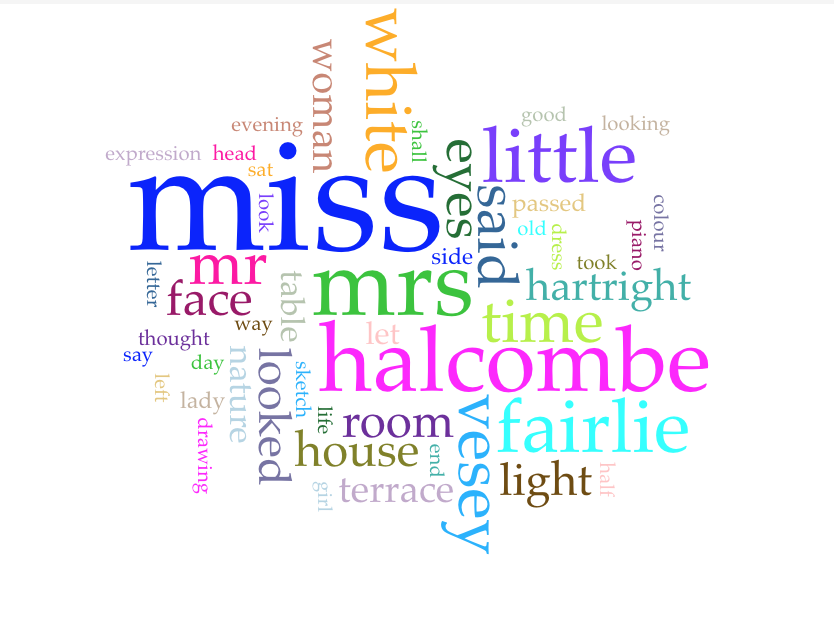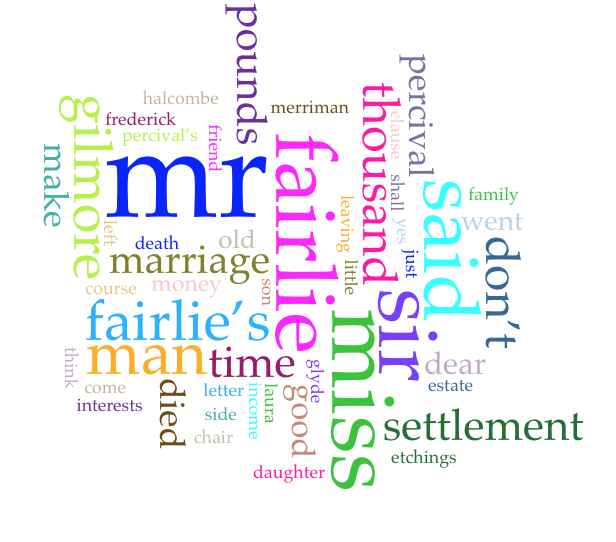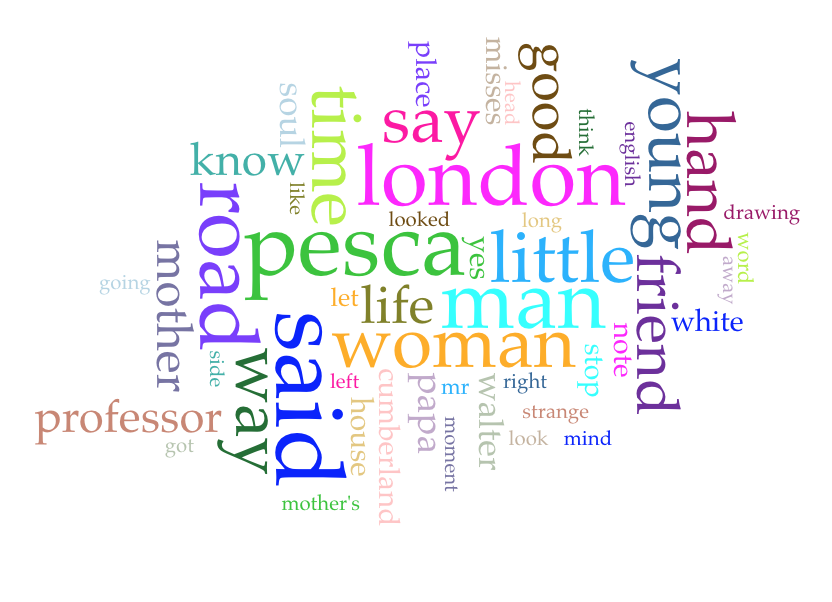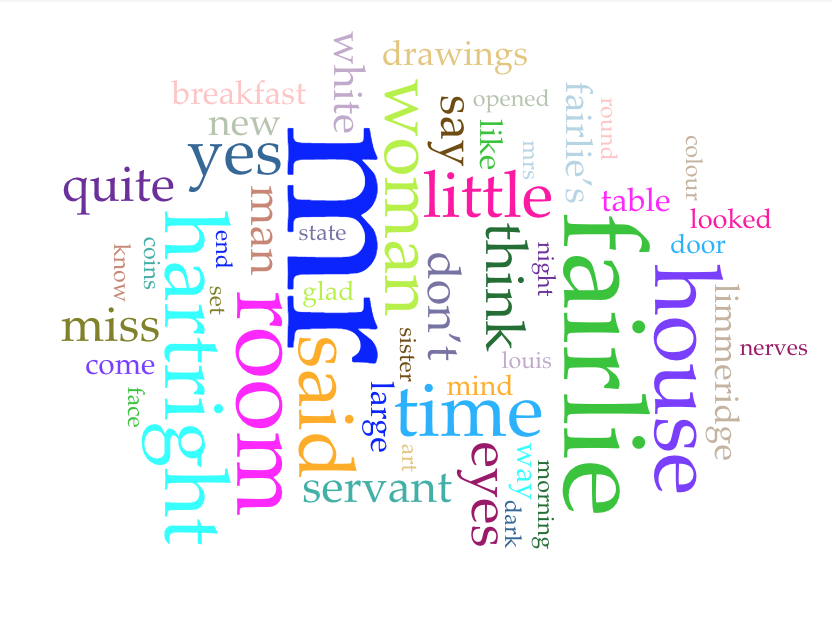- Apr 2023
-
uwprod.sharepoint.com uwprod.sharepoint.com
-
some research suggeststhat issues of inclusion and belonging can predominate to a point that“until members resolve where they stand in a particular social setting[emphasis added] they face difficulty in attending to the official tasksat hand”
-
- May 2022
-
hybridpedagogy.org hybridpedagogy.org
-
Actually, cMOOCs are often more flexible than for-credit courses and are better at a form of care Nel Noddings emphasizes: “Caring teachers listen to [learners] and help them to acquire the knowledge and attitudes needed to achieve their goals, not those of a pre-established curriculum.”
"Caring teachers listen to [learners] and help them to acquire the knowledge and attitudes needed to achieve their goals, not those of a pre-established curriculum.” - Nel Noddings
-
- Jun 2021
-
wisc.pb.unizin.org wisc.pb.unizin.org
-
No. 40
-
-
wisc.pb.unizin.org wisc.pb.unizin.org
-
No. 39
-
-
wisc.pb.unizin.org wisc.pb.unizin.org
-
No. 38
-
-
wisc.pb.unizin.org wisc.pb.unizin.org
-
No. 37
-
-
wisc.pb.unizin.org wisc.pb.unizin.org
-
No. 36
-
-
wisc.pb.unizin.org wisc.pb.unizin.org
-
No. 35
-
-
wisc.pb.unizin.org wisc.pb.unizin.org
-
No. 34
-
-
wisc.pb.unizin.org wisc.pb.unizin.org
-
No. 33
-
-
wisc.pb.unizin.org wisc.pb.unizin.org
-
No. 32
-
-
wisc.pb.unizin.org wisc.pb.unizin.org
-
No. 31
-
-
wisc.pb.unizin.org wisc.pb.unizin.org
-
No. 30
-
-
wisc.pb.unizin.org wisc.pb.unizin.org
-
No. 29
-
-
wisc.pb.unizin.org wisc.pb.unizin.org
-
No. 28
-
-
wisc.pb.unizin.org wisc.pb.unizin.org
-
No. 27
-
-
wisc.pb.unizin.org wisc.pb.unizin.org
-
No. 26
-
-
wisc.pb.unizin.org wisc.pb.unizin.org
-
No. 25
-
-
wisc.pb.unizin.org wisc.pb.unizin.org
-
No. 24
-
-
wisc.pb.unizin.org wisc.pb.unizin.org
-
No. 23
-
-
wisc.pb.unizin.org wisc.pb.unizin.org
-
No. 22
-
-
wisc.pb.unizin.org wisc.pb.unizin.org
-
No. 21
-
-
wisc.pb.unizin.org wisc.pb.unizin.org
-
No. 20
-
-
wisc.pb.unizin.org wisc.pb.unizin.org
-
No. 19
-
-
wisc.pb.unizin.org wisc.pb.unizin.org
-
No. 18
-
-
wisc.pb.unizin.org wisc.pb.unizin.org
-
No. 17
-
-
wisc.pb.unizin.org wisc.pb.unizin.org
-
No. 16
-
-
wisc.pb.unizin.org wisc.pb.unizin.org
-
No. 15
-
-
wisc.pb.unizin.org wisc.pb.unizin.org
-
No. 14
-
-
wisc.pb.unizin.org wisc.pb.unizin.org
-
No. 13
-
-
wisc.pb.unizin.org wisc.pb.unizin.org
-
No. 12
-
-
wisc.pb.unizin.org wisc.pb.unizin.org
-
No. 11
-
-
wisc.pb.unizin.org wisc.pb.unizin.org
-
No. 10
-
-
wisc.pb.unizin.org wisc.pb.unizin.org
-
No. 8
-
-
wisc.pb.unizin.org wisc.pb.unizin.org
-
No. 7
-
-
wisc.pb.unizin.org wisc.pb.unizin.org
-
No. 6
-
-
wisc.pb.unizin.org wisc.pb.unizin.org
-
No. 5
-
-
wisc.pb.unizin.org wisc.pb.unizin.org
-
No. 4
-
-
wisc.pb.unizin.org wisc.pb.unizin.org
-
No. 3
-
-
wisc.pb.unizin.org wisc.pb.unizin.org
-
No. 9
-
- May 2021
-
wisc.pb.unizin.org wisc.pb.unizin.org
-
highlighted in yellow
Like this! When you see text highlighted in yellow later on in this page, clicking on it will pop out an additional interactive element.
-
Practice Set 2
<iframe src="https://wisc.pb.unizin.org/oersourcebook/wp-admin/admin-ajax.php?action=h5p_embed&id=75" width="744" height="248" frameborder="0" allowfullscreen="allowfullscreen" title="Subject-Verb Agreement Practice Set 2 - Words like "each" as subject"></iframe><script src="https://wisc.pb.unizin.org/app/plugins/h5p/h5p-php-library/js/h5p-resizer.js" charset="UTF-8"></script>
-
Practice Set 1
<iframe src="https://wisc.pb.unizin.org/oersourcebook/wp-admin/admin-ajax.php?action=h5p_embed&id=74" width="651" height="260" frameborder="0" allowfullscreen="allowfullscreen" title="Subject-Verb Agreement Practice Set 1 - Subject Follows Verb"></iframe><script src="https://wisc.pb.unizin.org/app/plugins/h5p/h5p-php-library/js/h5p-resizer.js" charset="UTF-8"></script>
-
- Dec 2020
-
padlet.com padlet.com
-
When you visit a padlet page created by another Padlet user, that page may collect more information than we do and may provide information to third parties that we have no relationship with. We request you use discretion when sharing personal information on padlet pages created by other users.
How? Is this because embedded resources (YouTube, etc.) will send information to their host sites? Is this process automatic on displaying the padlet or is it something that would happen on clicking the resource?
A partial answer below addresses this - this does appear to create engagement trackable through those original sites. "You may access Third Party Services through the Service, for example by watching a YouTube video on a padlet. "
-
In the event that all or a portion of Padlet or its assets are acquired by or merged with a third-party, personal information that we have collected from users would be one of the assets transferred to or acquired by that third-party. This Policy will continue to apply to your information, and any acquirer would only be able to handle your personal information as per this Policy (unless you give consent to a new policy). We will provide you with notice of an acquisition within 30 days following the completion of such a transaction, by posting on our homepage, or by emailing you on your email address on file. If you do not consent to the use of your personal information by such a successor company, you may request its deletion from the company.
-
First and foremost, you should know that Padlet does not sell or rent your personal information to any third-party for any purpose.
Tags
Annotators
URL
-
- Nov 2020
-
wisc.pb.unizin.org wisc.pb.unizin.org
-
E100 Student Hours
In 2016, the UW-Madison Teaching Academy interviewed a group of students about their office hours experiences and their ideas for improving office hours. One of the suggestions the group made was to change the title. "Student Hours" conveys the idea that this time is for student conversations, not simply a time when faculty are on campus and grudgingly willing to be interrupted.
-
- Sep 2020
-
wisc.pb.unizin.org wisc.pb.unizin.org
-
Will
<iframe src="https://wisc.pb.unizin.org/tinyteachingtools/wp-admin/admin-ajax.php?action=h5p_embed&id=7" width="936" height="666" frameborder="0" allowfullscreen="allowfullscreen"></iframe><script src="https://wisc.pb.unizin.org/app/plugins/h5p/h5p-php-library/js/h5p-resizer.js" charset="UTF-8"></script>
-
- May 2020
-
unmomed.wordpress.com unmomed.wordpress.com
-
Images can include graphic organizers, such as flow charts, concept maps, or mind maps that help the learner see the connections between multiple new concepts.
Ah - this partly answers my last question
-
So, the auditory channel is being overloaded if the speaker is saying what is also present as slide text
is this necessarily true? I've certainly experienced it in some cases (esp. with larger blocks of text that I can read faster than I can hear), but I'm betting it's not obligatory..../
-
- Apr 2020
-
teaforteaching.com teaforteaching.com
-
Sure. So I do want to start by just reminding listeners that talking about trauma, learning about trauma, can bring up some feelings, which is a very normal reaction to that. So I just want to remind people, if you notice that, that it’s okay to take a rain check on listening and engaging in this conversation. I also do recommend that even if you feel okay to engage with a discussion about trauma that it’s recommended that you do so in small doses, especially during these very challenging times.
This is a lovely way to introduce this topic.
-
-
-
Welcome to ACUE’s Online Teaching Toolkit
Tags
Annotators
URL
-
- Mar 2020
-
novaramedia.com novaramedia.com
-
He referred to a viral video posted by a critical care nurse who implored shoppers to stop stripping supermarkets of essential items, leaving little behind for NHS workers coming off long shifts. It is an undeniably emotive and valid issue, but widespread calls for shoppers to exercise restraint have so far mirrored the government’s own narrow framing of the necessary response to coronavirus more broadly: namely, the absolute personalisation of responsibility over scrutiny of the infrastructure we all depend on.
-
-
twitter.com twitter.com
-
It is vital to remind students to TEST THESE TECHNOLOGIES before the conference. They need to make they're logged on, volume is up, etc, before they're appointed time. Otherwise, they may run into problems and spend the entire conference time trying to log on.
Sara Webb-Sunderhaus @webbsusa https://twitter.com/webbsusa/status/1237197494410457089
It is vital to remind students to TEST THESE TECHNOLOGIES before the conference. They need to make they're logged on, volume is up, etc, before their appointed time. Otherwise, they may run into problems and spend the entire conference time trying to log on.
-
Similarly, I still conference with students. They sign up for an individual conference using tools like @YouCanBookMe, and once again I have used video conferencing options built into the LMS, as well as FaceTime and Skype, for these conferences.
Sara Webb-Sunderhaus @webbsusa https://twitter.com/webbsusa/status/1237197494410457089
-
Of course, email is an important communication medium, but I put boundaries around it. I only answer email 9-5, Monday-Friday. No email on weekends or breaks. The students get used to it and learn to respect those boundaries. That cuts down on feeling like I am always "on."
Sara Webb-Sunderhaus @webbsusa https://twitter.com/webbsusa/status/1237197494410457089
-
-
poorvucenter.yale.edu poorvucenter.yale.edu
-
Academic Continuity: Your First Continuity Class Session
-
-
wisc.pb.unizin.org wisc.pb.unizin.org
-
How do you feel about writing in books?
We welcome you to share your own answers to this question! (Opens in new window.)
Below are participant responses to the survey questions.
Click the "more" button at the bottom right corner of this annotation to see additional survey responses. You can also [view the results in a larger page] (https://wisc.pb.unizin.org/wiwgrangerized/back-matter/poll-results/). (Opens in new window)
If you see error messages in the frames below, try opening this text in another browser.
<iframe src="https://wisc.pb.unizin.org/wiwgrangerized/wp-admin/admin-ajax.php?action=h5p_embed&id=18" width="958" height="790" frameborder="0" allowfullscreen="allowfullscreen"></iframe><script src="https://wisc.pb.unizin.org/app/plugins/h5p/h5p-php-library/js/h5p-resizer.js" charset="UTF-8"></script>
<iframe src="https://wisc.pb.unizin.org/wiwgrangerized/wp-admin/admin-ajax.php?action=h5p_embed&id=19" width="958" height="790" frameborder="0" allowfullscreen="allowfullscreen"></iframe><script src="https://wisc.pb.unizin.org/app/plugins/h5p/h5p-php-library/js/h5p-resizer.js" charset="UTF-8"></script>
<iframe src="https://wisc.pb.unizin.org/wiwgrangerized/wp-admin/admin-ajax.php?action=h5p_embed&id=20" width="958" height="424" frameborder="0" allowfullscreen="allowfullscreen"></iframe><script src="https://wisc.pb.unizin.org/app/plugins/h5p/h5p-php-library/js/h5p-resizer.js" charset="UTF-8"></script>
<iframe src="https://wisc.pb.unizin.org/wiwgrangerized/wp-admin/admin-ajax.php?action=h5p_embed&id=17" width="958" height="790" frameborder="0" allowfullscreen="allowfullscreen"></iframe><script src="https://wisc.pb.unizin.org/app/plugins/h5p/h5p-php-library/js/h5p-resizer.js" charset="UTF-8"></script>
Tags
Annotators
URL
-
- Feb 2020
-
wisc.pb.unizin.org wisc.pb.unizin.org
-
For example, this note should appear highlighted in yellow. Try clicking on it!
Hi there!
-
- Dec 2019
-
wisc.pb.unizin.org wisc.pb.unizin.org
-
For example, this note should appear highlighted in yellow. Try clicking on it!
This is what an annotation looks like!
-
- Oct 2019
-
wisc.pb.unizin.org wisc.pb.unizin.org
-
Ideally, an open pedagogy project explicitly welcomes future participation and adaptation (Robbins, “Guidelines”).
Timothy Robbins emphasizes this goal in his guidelines for contributors to the latest Rebus Community iteration of the Open Anthology of Earlier American Literature. In a distillation I find particularly elegant, he notes: "In its best iteration, “open pedagogy” entails the spread of access to knowledge with an invitation to participate in the re-creation of new knowledge" ("Guidelines: Section Introductions.")
-
-
wisc.pb.unizin.org wisc.pb.unizin.org
-
“But then again,” a person who used information in this way might say, “it’s not like I would be deliberately discriminating against anyone. It’s just an unfortunate proxy variable for lack of privilege and proximity to state violence.”[10]
In the current universe, Twitter also makes a number of predictions about users that could be used as proxy variables for economic and cultural characteristics. It can display things like your audience's net worth as well as indicators commonly linked to political orientation. Triangulating some of this data could allow for other forms of intended or unintended discrimination.
I've already been able to view a wide range (possibly spurious) information about my own reading audience through these analytics. On September 9th, 2019, I started a Twitter account for my 19th Century Open Pedagogy project and began serializing installments of critical edition, The Woman in White: Grangerized. The @OPP19c Twitter account has 62 followers as of September 17th.
Having followers means I have access to an audience analytics toolbar. Some of the account's followers are nineteenth-century studies or pedagogy organizations rather than individuals. Twitter tracks each account as an individual, however, and I was surprised to see some of the demographics Twitter broke them down into. (If you're one of these followers: thank you and sorry. I find this data a bit uncomfortable.)
Within this dashboard, I have a "Consumer Buying Styles" display that identifies categories such as "quick and easy" "ethnic explorers" "value conscious" and "weight conscious." These categories strike me as equal parts confusing and problematic: (Link to image expansion)
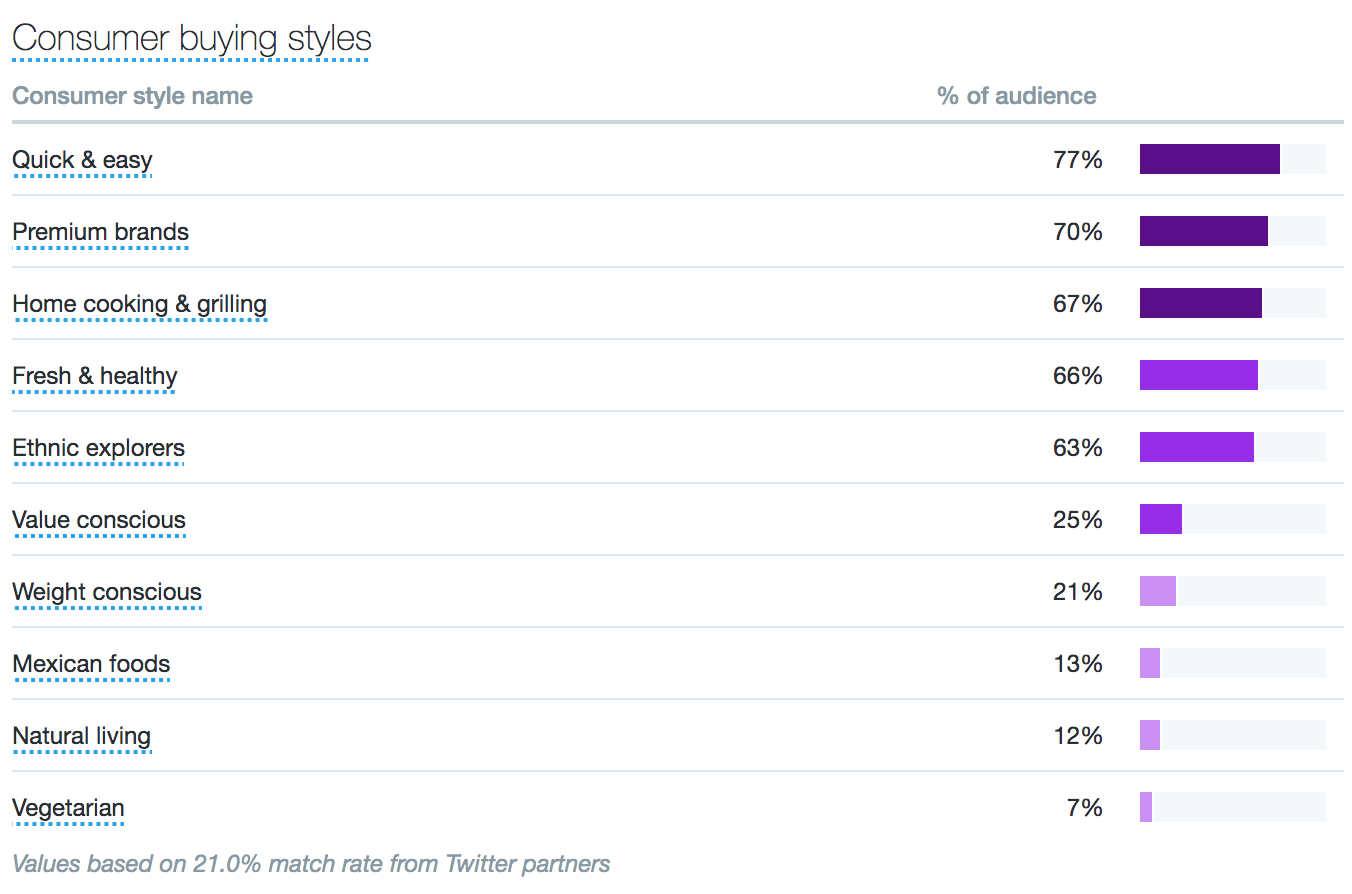
I have a "Marital Status" toolbar alleging that 52% of my audience is married and 49% single.
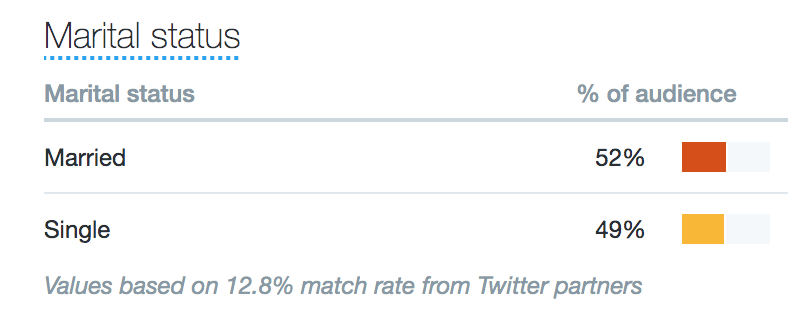
I also have a "Home Ownership" chart. (I'm presuming that the Elizabeth Gaskell House Museum's Twitter is counted as an owner...)
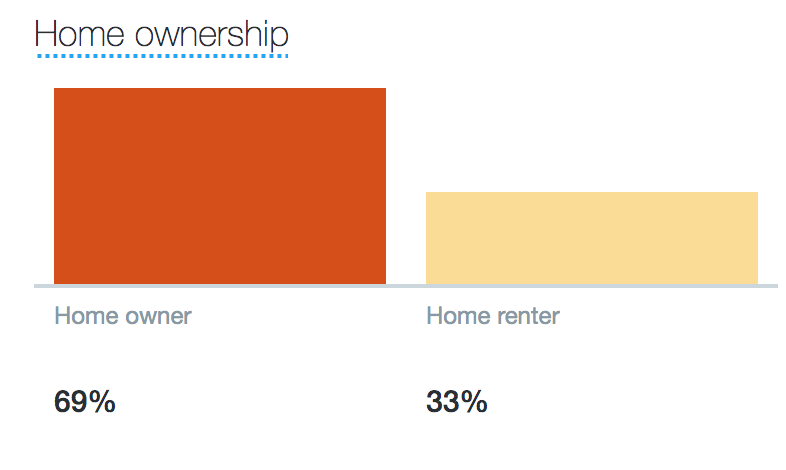
....and more
-
You can only form the minds of reasoning animals upon Facts: nothing else will ever be of any service to them.
<iframe src="https://wisc.pb.unizin.org/undissertating19c/wp-admin/admin-ajax.php?action=h5p_embed&id=12" width="959" height="353" frameborder="0" allowfullscreen="allowfullscreen"></iframe><script src="https://wisc.pb.unizin.org/app/plugins/h5p/h5p-php-library/js/h5p-resizer.js" charset="UTF-8"></script>
-
browsers and apps are able to log a wide range of user engagement events such as clicks, scrolling, or points when users’ cursors travel over a particular place on the page
As of 2019, the website clickclickclick.click playfully dramatizes what your browser can tell people about your interactions with it.
-
- Sep 2019
-
wisc.pb.unizin.org wisc.pb.unizin.org
-
This content is password protected
This content is still under development. Please check back soon for the official version! If you would like to be a beta-reader for this section, I'd welcome your thoughts. Feel free to contact me at nsalmon [at] wisc [dot] edu.
-
“But then again,” a person who used information in this way might say, “it’s not like I would be deliberately discriminating against anyone. It’s just an unfortunate proxy variable for lack of privilege and proximity to state violence.
In the current universe, Twitter also makes a number of predictions about users that could be used as proxy variables for economic and cultural characteristics. It can display things like your audience's net worth as well as indicators commonly linked to political orientation. Triangulating some of this data could allow for other forms of intended or unintended discrimination.
I've already been able to view a wide range (possibly spurious) information about my own reading audience through these analytics. On September 9th, 2019, I started a Twitter account for my 19th Century Open Pedagogy project and began serializing installments of critical edition, The Woman in White: Grangerized. The @OPP19c Twitter account has 62 followers as of September 17th.
Having followers means I have access to an audience analytics toolbar. Some of the account's followers are nineteenth-century studies or pedagogy organizations rather than individuals. Twitter tracks each account as an individual, however, and I was surprised to see some of the demographics Twitter broke them down into. (If you're one of these followers: thank you and sorry. I find this data a bit uncomfortable.)
Within this dashboard, I have a "Consumer Buying Styles" display that identifies categories such as "quick and easy" "ethnic explorers" "value conscious" and "weight conscious." These categories strike me as equal parts confusing and problematic: (Link to image expansion)

I have a "Marital Status" toolbar alleging that 52% of my audience is married and 49% single.

I also have a "Home Ownership" chart. (I'm presuming that the Elizabeth Gaskell House Museum's Twitter is counted as an owner...)

....and more
-
browsers and apps are able to log a wide range of user engagement events such as hyperlink clicks, scrolling, or points when users’ cursors travel over a particular place on the page
As of 2019, the website clickclickclick.click playfully dramatizes what your browser can tell people about your interactions with it.
-
This content is password protected.
This section of Undissertating is in development is not yet published to a wider readership, but will be soon.
If, however, you're excited to chat about it in advance, please feel free to reach out on Twitter at @Naomi_Salmon and we can figure out a mode of conversation from there!
-
-
wisc.pb.unizin.org wisc.pb.unizin.org
-
This content is password protected
This content is still under development. Please check back soon for the official version! If you would like to be a beta-reader for this section, I'd welcome your thoughts. Feel free to contact me at nsalmon [at] wisc [dot] edu.
-
-
wisc.pb.unizin.org wisc.pb.unizin.org
-
information privilege
Char Brooks's 2014 post "On Information Privilege" examines this topic from Brooks's perspective as a librarian and educator.
Duke University's Library 101 Toolkit provides additional information, classroom activities, student readings, and a CC-BY-NC-licensed infographic about information privilege. (Click infographic hyperlink for larger version.)

Works Cited:
Brooks, Char. "On Information Privilege" Infomational, 1 December 2014, https://infomational.com/2014/12/01/on-information-privilege/. Permalink: perma.cc/Y7AT-C6VZ.
"Information Privilege." Library 101 Tookit, Duke University, 13 August 2018, https://sites.duke.edu/library101_instructors/2018/08/13/information-privilege/. Permalink: perma.cc/DNY3-HHUM.
-
-
wisc.pb.unizin.org wisc.pb.unizin.org
-
contributing new media to the text
<iframe title="vimeo-player" src="https://player.vimeo.com/video/70518465" width="640" height="360" frameborder="0" allowfullscreen></iframe> This Huntington video shows a strategy that grangerizers often used to embed images within existing texts.
How to Inlay a Print [in-gallery video] (EXHIBITIONS | Illuminated Palaces) from The Huntington on Vimeo.
-
Reading Histories
To share annotations of your own:
1) You'll need a free Hypothes.is account.
2) Toggle between the UW-Madison Pressbooks layer and the Public annotation layer.
<iframe src="https://wisc.pb.unizin.org/wiwgrangerized/wp-admin/admin-ajax.php?action=h5p_embed&id=7" width="830" height="972" frameborder="0" allowfullscreen="allowfullscreen"></iframe><script src="https://wisc.pb.unizin.org/app/plugins/h5p/h5p-php-library/js/h5p-resizer.js" charset="UTF-8"></script>
3) Share your thoughts! (Don't forget to click "Post to public!"
Click here for additional information and instructions about this book's annotation layer.
-
Marginalia
Remi Kalir and Antero Garcia are in the process of revising and gathering feedback on their forthcoming book, Annotation. The early drafts of this book came out after I first composed this section of The Woman in White: Grangerized. I'm thrilled to be reading Kalir and Garcia's text in the present and am looking forward to drawing in some of their points in this critical edition. Future additions of this chapter will reflect their thoughtful, exciting work!
-
-
wisc.pb.unizin.org wisc.pb.unizin.org
-
separate public domain illustrations
The main source images for this collage:
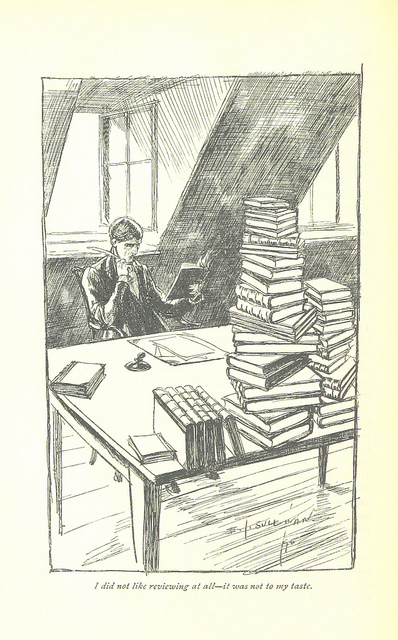
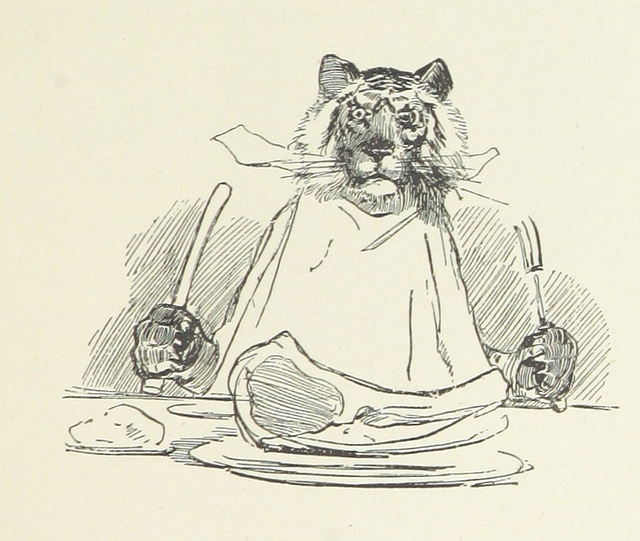
Borrow, George Henry, and E. J. Sullivan. "I did not like reviewing at all--it was not to my taste." Lavengro, Macmillan and Co., London, 1896, p. 296. British Library Flickr, HMNTS 012621.h.20. Accessed 1 February 2018.
Dodge, Mary Elizabeth. "A Terrible Tiger." When Life is Young: a Collection of Verse for Boys and Girls, Century Co., 1894, New York, p. 201. British Library Flickr. Accessed 1 February 2018.
-
Specialty areas that present a more level playing field for access to the primary and secondary sources at the heart of their conversations have the potential to be more inclusive than others
Jeff Spies of the Center for Open Science provides an anecdote about this process at work in other fields in an interview with documentarians for the film Paywall. He notes:
"Research efficiency comes with increases in quality, increases in inclusivity, increases in diversity, increases in innovation. . . . I had a visit to the University of Belgrade a few years ago, and I was meeting with grad students before my lecture, and we were going around the room talking about what each researcher did and were working on for their thesis. And almost everyone in the room was working on implicit cognition. And it was amazing that there were so many students working on this particular area of research, and so I said, 'Why are all of you doing this? How has that become this be the area that's so popular?' And the immediate response was, 'Well, we can access the literature in this area.' 'What do you mean?' I said. 'Well, there is a norm of all the leading researchers in your field: all of you put your papers online. So, we can find them and we can know what’s going on right now in this literature that we can’t get access to in other sub-disciplines.' I was blown away by that, right? That they made some decisions about what to study based on what they could access (Paywall 00:16:19 - 00:17:54)
-
-
wisc.pb.unizin.org wisc.pb.unizin.org
-
This content is password protected. To view it please enter your password below:
This content is still under development. Please check back soon for the official version! If you would like to be a beta-reader for this section, I'd welcome your thoughts. Feel free to contact me at nsalmon [at] wisc [dot] edu.
-
-
wisc.pb.unizin.org wisc.pb.unizin.org
-
There will be a brief context statement here soon.
This content is still under development. Please check back soon for the official version! If you would like to be a beta-reader for this section, I'd welcome your thoughts. Feel free to contact me at nsalmon [at] wisc [dot] edu.
-
-
wisc.pb.unizin.org wisc.pb.unizin.org
-
This content is password protected
This content is still under development. Please check back soon for the official version! If you would like to be a beta-reader for this section, I'd welcome your thoughts. Feel free to contact me at nsalmon [at] wisc [dot] edu.
-
-
wisc.pb.unizin.org wisc.pb.unizin.org
-
This content is password protected
This content is still under development. Please check back soon for the official version! If you would like to be a beta-reader for this section, I'd welcome your thoughts. Feel free to contact me at nsalmon [at] wisc [dot] edu.
-
-
wisc.pb.unizin.org wisc.pb.unizin.org
-
This content is password protected
This content is still under development. Please check back soon for the official version! If you would like to be a beta-reader for this section, I'd welcome your thoughts. Feel free to contact me at nsalmon [at] wisc [dot] edu.
-
-
wisc.pb.unizin.org wisc.pb.unizin.org
-
This content is password protected
This content is still under development. Please check back soon for the official version! If you would like to be a beta-reader for this section, I'd welcome your thoughts. Feel free to contact me at nsalmon [at] wisc [dot] edu.
-
-
wisc.pb.unizin.org wisc.pb.unizin.org
-
This content is password protected
This content is still under development. Please check back soon for the official version! If you would like to be a beta-reader for this section, I'd welcome your thoughts. Feel free to contact me at nsalmon [at] wisc [dot] edu.
-
-
wisc.pb.unizin.org wisc.pb.unizin.org
-
This content is password protected.
This content is still under development. Please check back soon for the official version! If you would like to be a beta-reader for this section, I'd welcome your thoughts. Feel free to contact me at nsalmon [at] wisc [dot] edu.
-
-
wisc.pb.unizin.org wisc.pb.unizin.org
-
This content is password protected.
This content is still under development. Please check back soon for the official version! If you would like to be a beta-reader for this section, I'd welcome your thoughts. Feel free to contact me at nsalmon [at] wisc [dot] edu.
-
-
wisc.pb.unizin.org wisc.pb.unizin.org
-
This content is password protected.
This content is still under development. Please check back soon for the official version! If you would like to be a beta-reader for this section, I'd welcome your thoughts. Feel free to contact me at nsalmon [at] wisc [dot] edu.
-
-
recruiting.piazza.com recruiting.piazza.com
-
And the best part is, you don’t have to worry about overlooking anyone since over two million students at 2,000 schools and 90 countries use Piazza and have opted-in to be discovered by employers.
"You don't have to worry about overlooking anyone"... except the students who have personal reasons to be wary of opting into data collection about their learning.
-
-
wisc.pb.unizin.org wisc.pb.unizin.org
-
This content is password protected
This section of Undissertating is in development is not yet published to a wider readership, but will be soon.
If, however, you're excited to chat about it in advance, please feel free to reach out on Twitter at @Naomi_Salmon and we can figure out a mode of conversation from there!
-
-
wisc.pb.unizin.org wisc.pb.unizin.org
-
This content is password protected
This section of Undissertating is in development is not yet published to a wider readership, but will be soon.
If, however, you're excited to chat about it in advance, please feel free to reach out on Twitter at @Naomi_Salmon and we can figure out a mode of conversation from there!
-
-
wisc.pb.unizin.org wisc.pb.unizin.org
-
This content is password protected
This section of Undissertating is in development is not yet published to a wider readership, but will be soon.
If, however, you're excited to chat about it in advance, please feel free to reach out on Twitter at @Naomi_Salmon and we can figure out a mode of conversation from there!
-
-
wisc.pb.unizin.org wisc.pb.unizin.org
-
This content is password protected
This section of Undissertating is in development is not yet published to a wider readership, but will be soon.
If, however, you're excited to chat about it in advance, please feel free to reach out on Twitter at @Naomi_Salmon and we can figure out a mode of conversation from there!
-
-
wisc.pb.unizin.org wisc.pb.unizin.org
-
This content is password protected
This section of Undissertating is in development is not yet published to a wider readership, but will be soon.
If, however, you're excited to chat about it in advance, please feel free to reach out on Twitter at @Naomi_Salmon and we can figure out a mode of conversation from there!
-
-
wisc.pb.unizin.org wisc.pb.unizin.org
-
This content is password protected
This section of Undissertating is in development is not yet published to a wider readership, but will be soon.
If, however, you're excited to chat about it in advance, please feel free to reach out on Twitter at @Naomi_Salmon and we can figure out a mode of conversation from there!
-
-
wisc.pb.unizin.org wisc.pb.unizin.org
-
This content is password protected
This section of Undissertating is in development is not yet published to a wider readership, but will be soon.
If, however, you're excited to chat about it in advance, please feel free to reach out on Twitter at @Naomi_Salmon and we can figure out a mode of conversation from there!
-
-
wisc.pb.unizin.org wisc.pb.unizin.org
-
This content is password protected
This section of Undissertating is in development is not yet published to a wider readership, but will be soon.
If, however, you're excited to chat about it in advance, please feel free to reach out on Twitter at @Naomi_Salmon and we can figure out a mode of conversation from there!
-
-
wisc.pb.unizin.org wisc.pb.unizin.org
-
This content is password protected
This section of Undissertating is in development is not yet published to a wider readership, but will be soon.
If, however, you're excited to chat about it in advance, please feel free to reach out on Twitter at @Naomi_Salmon and we can figure out a mode of conversation from there!
-
-
wisc.pb.unizin.org wisc.pb.unizin.org
-
This content is password protected
This section of Undissertating is in development is not yet published to a wider readership, but will be soon.
If, however, you're excited to chat about it in advance, please feel free to reach out on Twitter at @Naomi_Salmon and we can figure out a mode of conversation from there!
-
-
wisc.pb.unizin.org wisc.pb.unizin.org
-
This content is password protected
This section of Undissertating is in development is not yet published to a wider readership, but will be soon.
If, however, you're excited to chat about it in advance, please feel free to reach out on Twitter at @Naomi_Salmon and we can figure out a mode of conversation from there!
-
-
wisc.pb.unizin.org wisc.pb.unizin.org
-
This content is password protected
This section of Undissertating is in development is not yet published to a wider readership, but will be soon.
If, however, you're excited to chat about it in advance, please feel free to reach out on Twitter at @Naomi_Salmon and we can figure out a mode of conversation from there!
-
-
wisc.pb.unizin.org wisc.pb.unizin.org
-
This content is password protected
This section of Undissertating is in development is not yet published to a wider readership, but will be soon.
If, however, you're excited to chat about it in advance, please feel free to reach out on Twitter at @Naomi_Salmon and we can figure out a mode of conversation from there!
-
-
wisc.pb.unizin.org wisc.pb.unizin.org
-
This content is password protected
This section of Undissertating is in development is not yet published to a wider readership, but will be soon.
If, however, you're excited to chat about it in advance, please feel free to reach out on Twitter at @Naomi_Salmon and we can figure out a mode of conversation from there!
-
-
wisc.pb.unizin.org wisc.pb.unizin.org
-
This content is password protected.
This section of Undissertating is in development is not yet published to a wider readership, but will be soon.
If, however, you're excited to chat about it in advance, please feel free to reach out on Twitter at @Naomi_Salmon and we can figure out a mode of conversation from there!
-
- Aug 2019
-
wisc.pb.unizin.org wisc.pb.unizin.org
-
How do you feel about writing in books?
We welcome you to share your own answers to this question! (Opens in new window.)
Below are participant responses to the survey questions.
Click the "more" button at the bottom right corner of this annotation to see additional survey responses. You can also [view the results in a larger page] (https://wisc.pb.unizin.org/wiwgrangerized/back-matter/poll-results/). (Opens in new window)
If you see error messages in the frames below, try opening this text in another browser.
<iframe src="https://wisc.pb.unizin.org/wiwgrangerized/wp-admin/admin-ajax.php?action=h5p_embed&id=18" width="958" height="790" frameborder="0" allowfullscreen="allowfullscreen"></iframe><script src="https://wisc.pb.unizin.org/app/plugins/h5p/h5p-php-library/js/h5p-resizer.js" charset="UTF-8"></script>
<iframe src="https://wisc.pb.unizin.org/wiwgrangerized/wp-admin/admin-ajax.php?action=h5p_embed&id=19" width="958" height="790" frameborder="0" allowfullscreen="allowfullscreen"></iframe><script src="https://wisc.pb.unizin.org/app/plugins/h5p/h5p-php-library/js/h5p-resizer.js" charset="UTF-8"></script>
<iframe src="https://wisc.pb.unizin.org/wiwgrangerized/wp-admin/admin-ajax.php?action=h5p_embed&id=20" width="958" height="424" frameborder="0" allowfullscreen="allowfullscreen"></iframe><script src="https://wisc.pb.unizin.org/app/plugins/h5p/h5p-php-library/js/h5p-resizer.js" charset="UTF-8"></script>
<iframe src="https://wisc.pb.unizin.org/wiwgrangerized/wp-admin/admin-ajax.php?action=h5p_embed&id=17" width="958" height="790" frameborder="0" allowfullscreen="allowfullscreen"></iframe><script src="https://wisc.pb.unizin.org/app/plugins/h5p/h5p-php-library/js/h5p-resizer.js" charset="UTF-8"></script>
-
- May 2019
-
wisc.pb.unizin.org wisc.pb.unizin.org
-
The English intellect is sound, so far as it goes,” he continued, seating himself at the table; ” but it has one grave defect—it is always cautious in the wrong place.”
The September 8, 1860 Literary Gazette review of The Woman in White calls attention to these lines in a series of excerpts about Wilkie Collins's style and characterization.
-
-
wisc.pb.unizin.org wisc.pb.unizin.org
-
When an English jury has to choose between a plain fact, on the surface, and a long explanation under the surface, it always takes the fact, in preference to the explanation.
The September 8, 1860 Literary Gazette review of The Woman in White calls attention to this sentence in a series of excerpts about Wilkie Collins's style and characterization.
-
-
wisc.pb.unizin.org wisc.pb.unizin.org
-
Any woman who is sure of her own wits, is a match, at any time, for a man who is not sure of his own temper.
The September 8, 1860 Literary Gazette review of The Woman in White calls attention to this sentence in a series of excerpts about Wilkie Collins's style and characterization.
-
-
wisc.pb.unizin.org wisc.pb.unizin.org
-
Men little know, when they say hard things to us, how well we remember them, and how much harm they do us.
The September 8, 1860 Literary Gazette review of The Woman in White calls attention to these lines in a series of excerpts about Wilkie Collins's style and characterization.
-
Women can resist a man’s love, a man’s fame, a man’s personal appearance, and a man’s money; but they cannot resist a man’s tongue, when he knows how to talk to them.[
The September 8, 1860 Literary Gazette review of The Woman in White calls attention to this sentence in a series of excerpts about Wilkie Collins's style and characterization.
-
-
wisc.pb.unizin.org wisc.pb.unizin.org
-
Our words are giants when they do us an injury, and dwarfs when they do us a service.
The September 8, 1860 Literary Gazette review of The Woman in White calls attention to this final sentence in a series of excerpts used to illustrate Wilkie Collins's style and characterization.
-
-
wisc.pb.unizin.org wisc.pb.unizin.org
-
There are many varieties of sharp practitioners in this world, but, I think, the hardest of all to deal with are the men who overreach you under the disguise of inveterate good humour. A fat, well-fed, smiling, friendly man of business is of all parties to a bargain the most hopeless to deal with. Mr. Merriman was one of this class.
The September 8, 1860 Literary Gazette review of The Woman in White calls attention to these lines in a series of excerpts used to illustrate Wilkie Collins's style and characterization.
-
-
wisc.pb.unizin.org wisc.pb.unizin.org
-
When two members of a family, or two intimate friends, are separated, and one goes abroad and one remains at home, the return of the relative or friend who has been travelling, always seems to place the relative or friend who has been staying at home at a painful disadvantage, when the two first meet
The September 8, 1860 Literary Gazette review of The Woman in White calls attention to these lines in a series of excerpts used to illustrate Wilkie Collins's style and characterization.
-
-
www.common-place-archives.org www.common-place-archives.org
-
The extra-illustration fad started in eighteenth-century England as a way for gentlemen to demonstrate their wealth and taste by essentially recreating a book with costly prints
-
Extra-illustrators took apart existing books, inserting pictures, autographs, and other material with some relationship to the original, often having them expensively rebound. In an extra-illustrated theater history, for example, a reference to the actor "Garrick's drama of 'Gulliver in Lilliput'" is followed by three small pictures of Jonathan Swift (each mounted on a full page), playbills, a two-page print depicting Gulliver at Brobdingnag and a series of other tangentially related illustrations. When an extra-illustrator was done with it, a 250-page book might have been enlarged to ten volumes. Extra-illustration transformed ordinary books into a frame or armature for the compiler's collection of visual images; sometimes the leaves of the original text are hard to find between the pages of prints.
-
To ensure that the extra-illustrated book would not be mistaken for a scrapbook, one authority explained that grangerizers should add magazine and newspaper articles only if they had the paper split (literally separating its front and back faces), so that type appeared only on one side—something the average scrapbook-maker could not afford. Such an article would evidently be valued for its now specialized visual qualities and the expense of preparing it for extra-illustration, not just for its particular content.
-
-
wisc.pb.unizin.org wisc.pb.unizin.org
-
Inscribed gift books also supported later efforts to promote women’s rights (Rappoport 10)
Writing inscriptions and irreverent marginal notes in books also has a role in feminist activism today. As one example, the Double Union feminist coding space in San Francisco, USA, has a copy of the book Lean In on its shelves that participants are invited to write critiques in together.
<iframe src="https://wisc.pb.unizin.org/wiwgrangerized/wp-admin/admin-ajax.php?action=h5p_embed&id=16" width="959" height="1463" frameborder="0" allowfullscreen="allowfullscreen"></iframe><script src="https://wisc.pb.unizin.org/app/plugins/h5p/h5p-php-library/js/h5p-resizer.js" charset="UTF-8"></script>
For more information, see Rebecca Greenfield's article, "Why Silicon Valley Needs The Coder Grrrls Of Double Union, The Feminist Hacker Space." Fast Company, 14 July 2014, https://www.fastcompany.com/3031944/why-silicon-valley-needs-the-coder-grrrls-of-double-union-the-feminist. Permalink: https://perma.cc/462U-ER3L
-
-
wisc.pb.unizin.org wisc.pb.unizin.org
-
Limited reading platforms are especially frustrating at a time when new trends in application development are expanding how writers can speak to one another in the margins, extra-illustrate their notes, or reorganize and juxtapose quotations in a dynamic network.
Two examples of such platforms:
- Hypothes.is, the social annotation app where this very note lives, and
- the LiquidText app (pictured below and in text), a program that allows scholars to view all of their highlights within a document at once, quickly copy-paste for notetaking, organize their notes into a mind-map, and draw on all of these notes using a stylus.
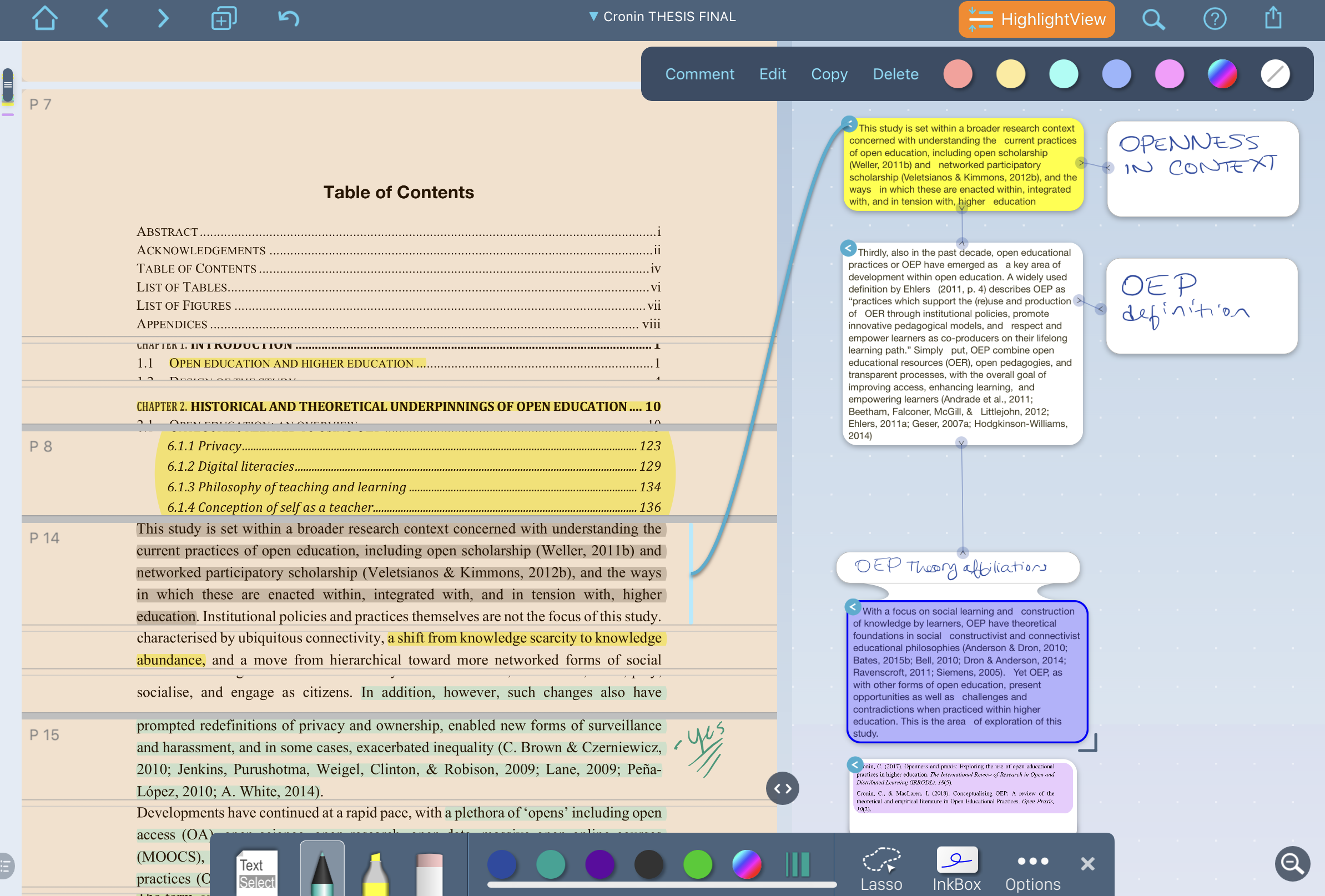
Screenshot subject: Cronin, Catherine. Openness and praxis: A situated study of academic staff meaning-making and decision-making with respect to openness and use of open educational practices in higher education. 2018, PhD Dissertation, National University of Ireland--Galway. http://hdl.handle.net/10379/7276. (CC-BY-NC-ND)
A personal anecdote: before I started working with these apps, I spent a long time pasting physical cutouts from texts onto a huge scroll of butcher paper that would fill my living room. Being able to spatially organize ideas using string and sticky-notes or nonlinear note-taking apps is important to my own research process.
-
- Apr 2019
-
wisc.pb.unizin.org wisc.pb.unizin.org
-
5 May 1860
The day before this installment hit the shelves, the Hull Packet and East Riding Times (a periodical published in a town in Yorkshire, England) weighed in on Collins's use of letters and found documents in his novel:
In All the Year Round, Mr Wilkie Collins, whose Antonina made him suddenly famous, is continuing his most exciting story of “The Woman in White” Usually novels composed of extracts from the letters and diaries of the characters moving in the story, are failures: and to this rule Sir Walter Scott’s Red Gauntlet, even, is no exception. Mr Wilkie Collins, is, however, a great artist in the mechanical development of a story, and, therefore, in spite of the continued extracts from “Miss Halcombe’s diary,” and “Walter Hartright’s journal,” and “Miss Michelson’s narrative,” “The Woman in White,” holds the reader in breathless suspense, and we venture to say that the thousands might be multiplied by many tens who, week after week, and month after month, feel it one of their pressing anxieties to know through what new tribulations Mr. Wilkie Collins’s imaginary heroines will have to pass. In other articles in All the Year Round too much of the mannerism which characterized the papers in Household Words is apparent. Mr. Dickens’s own papers “The Journeys of the Uncommercial Traveller,” are interesting enough, but the imitation of Mr Dickens’s style in the same periodical are often sadly dull and wearisome.
"Literature." Hull Packet and East Riding Times [Hull, England] 4 May 1860: n.p. 19th Century British Newspapers. 7 Apr. 2015.
-
-
wisc.pb.unizin.org wisc.pb.unizin.org
-
Why rock the boat?
Cliff's notes: The boat is too small and it is leaking.
-
It’s become a truism that to compose an academic text is to participate in an active and ongoing conversation
Kenneth Burke's metaphor of the 'unending conversation' of scholarship is a touchstone reference for many writers:
Imagine that you enter a parlor. You come late. When you arrive, others have long preceded you, and they are engaged in a heated discussion, a discussion too heated for them to pause and tell you exactly what it is about. In fact, the discussion had already begun long before any of them got there, so that no one present is qualified to retrace for you all the steps that had gone before. You listen for a while, until you decide that you have caught the tenor of the argument; then you put in your oar. Someone answers; you answer him; another comes to your defense; another aligns himself against you, to either the embarrassment or gratification of your opponent, depending upon the quality of your ally's assistance. However, the discussion is interminable. The hour grows late, you must depart. And you do depart, with the discussion still vigorously in progress.
Burke, Kenneth. Philosophy of Literary Form: Studies in Symbolic Action. Louisiana State University Press, 1941, pp. 110-111.
-
Surely, this is the sort of person who unleashes his work into the world only when the forces of his genius have wrought something polished, whole, and final.
Google image search provides anecdotal support for this point.
Typing "scholar" into a Google search brings back a series of images of male scholars who are the only people in the frame.
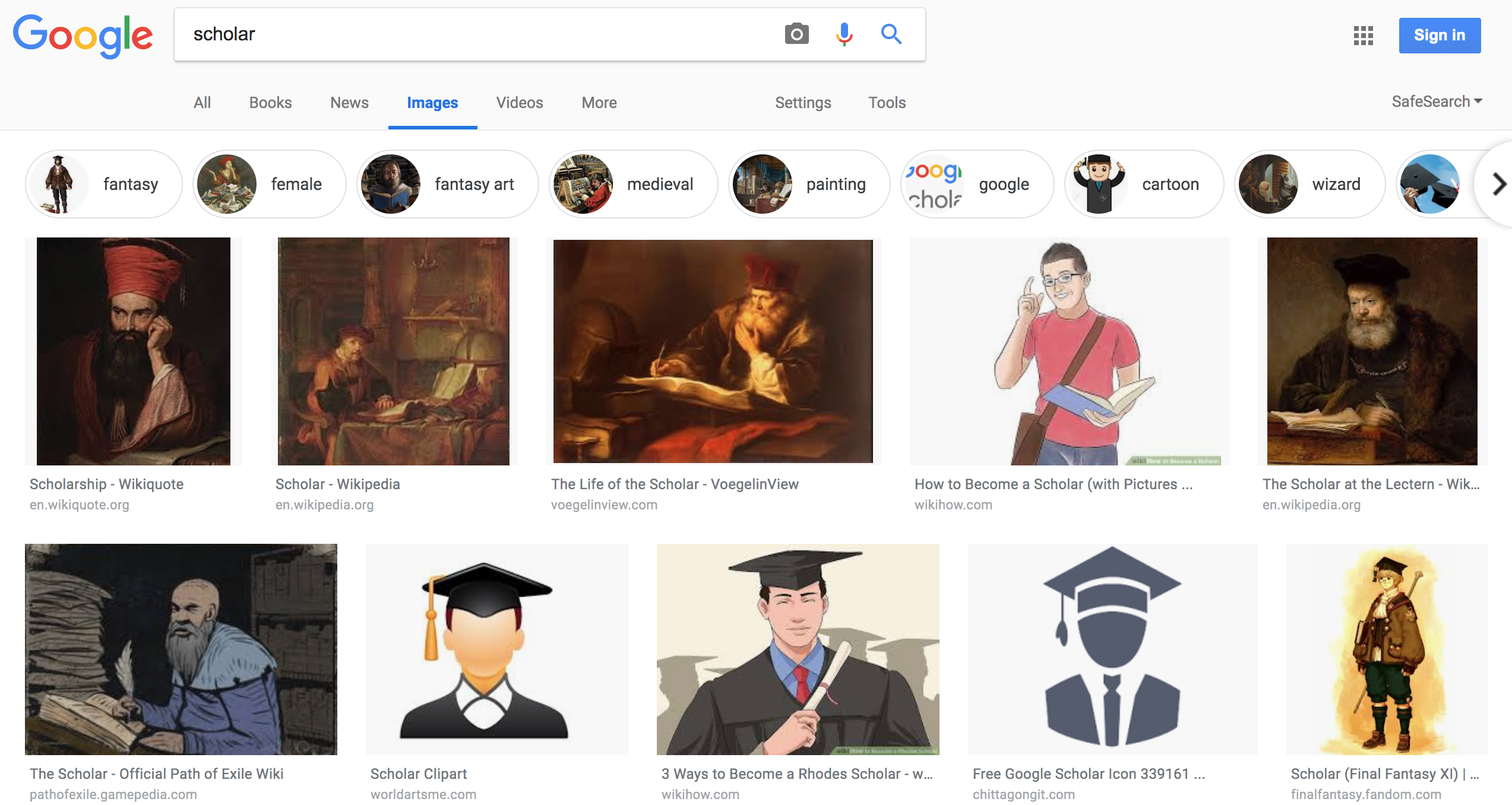
Note: I conducted this search in an incognito browser to lessen the likelihood that my previous search history would shape my present search results.
-
- Mar 2019
-
wisc.pb.unizin.org wisc.pb.unizin.org
-
As publishing giant Cengage itself boasts in its March 2018 report to shareholders, “In contrast to print publications, our digital products cannot be resold or transferred. We therefore realize revenue from every end user” (“Annual Report” 6).
Predictably, Cengage's 2018 Annual Report also assures stockholders that it has a plan to increase profits in this area:
We plan to continue to aggressively invest in the growth of our digital products and platforms while increasingly focusing and incentivizing our Go-To-Market team in this area" (6).
-
Commentators were quick to notice that Elsevier’s description places emphasis on the “business” and the “customer;” the “commercial goals” of the publisher and the importance of “compliance,” “upward reporting,” “extracting data, and “deliverables.” Likewise—in this listing, at least—being “viewed as an organization which supports OA” appears to take priority over actually supporting OA.
Just for fun: If we use the Voyant Word Cloud Visualizer tool to examine the Elsevier Open Access job posting, we can see the most common words in the listing (pictured here):
<iframe src="https://wisc.pb.unizin.org/undissertating19c/wp-admin/admin-ajax.php?action=h5p_embed&id=10" width="959" height="840" frameborder="0" allowfullscreen="allowfullscreen"></iframe><script src="https://wisc.pb.unizin.org/app/plugins/h5p/h5p-php-library/js/h5p-resizer.js" charset="UTF-8"></script>
Topping the list: OA (8 occurrences), policy (8), team (7), access (6), analysis (6), business (6), identify (5), management (5), strategy (5), and support (5).
-
open-access publications
George Cham, the author/illustrator behind PhD Comics, created a visual explainer video that unpacks the rationale behind open access:
<iframe src="https://www.youtube.com/embed/L5rVH1KGBCY" frameborder="0" allow="accelerometer; autoplay; encrypted-media; gyroscope; picture-in-picture" allowfullscreen></iframe> -
in a 2019 UC-Berkeley news bulletin about the decision not to sign a new contract, Librarian Jeffrey MacKie-Mason informed the community that during renegotiations, the university had expressed an interest in reducing their Elsevier subscription fees, which were by this point “25 percent of UC system-wide journal costs” (Kell).
If you'd like a bigger picture of the University of California System's other publisher relationships, economics professor Ted Bergstrom has requested and hosted these contracts on his journal-tracking website:
-
According to the United States Bureau of Labor Statistics, the consumer price index for college textbooks increased by 88% between 2006 and 2016.
Many thanks to Steel Wagstaff for sharing this resource with me.
To see a tiny, interactive version of this chart, click the "More" option at the bottom of this marginal annotation and scroll down in the iframe below.
To view the Bureau of Labor Statistics' interactive chart in full-screen mode, visit the live or permalink version of the 2016 report "College tuition and fees increase 63 percent since January 2006."
To learn more about the data displayed, see "How BLS Measures Price Change for College Tuition and Fees in the Consumer Price Index."
<iframe src="https://wisc.pb.unizin.org/undissertating19c/wp-admin/admin-ajax.php?action=h5p_embed&id=8" width="958" height="1096" frameborder="0" allowfullscreen="allowfullscreen"></iframe><script src="https://wisc.pb.unizin.org/app/plugins/h5p/h5p-php-library/js/h5p-resizer.js" charset="UTF-8"></script>
-
-
4re.referrals.selectminds.com 4re.referrals.selectminds.com
-
flexible policy frameworks
'Morally flexible policy frameworks,' perhaps?
Because here's what happened when the UC system tried to negotiate open publishing agreements for its scholars within a new contract. First, they gave UC librarians an astronomically high price for open access publishing. University Librarian Jeffrey MacKie-Mason writes:
We also wanted a contract that integrated a paid subscription with open access publishing fees. It would have been a transformative agreement, one that would shift payments for reading journal articles into payments for publishing them, and publishing them open access.
Elsevier eventually offered to do something like what we wanted, for open access, but they wanted to charge us a lot more. Our current calculations are that they would have increased the amount of our payments by 80 percent — an additional $30 million over a three-year contract.
Next, Elsevier tried to manipulate members of the UC community to see them as team players.
Elsevier made a new, quite complex, but novel proposal to us at the end of January. On Monday, our negotiating team gave them a written response outlining our appreciation for Elsevier’s effort, but saying that conditions had to be met for us to sign a contract, and that we thought we were pretty far apart. We knew if they couldn’t accommodate us, there was not much point in continuing to negotiate at this time.
Elsevier wanted to keep meeting with us, and we have a meeting scheduled for tomorrow (Friday), but yesterday they approached our faculty directly — faculty who are editors of Elsevier journals, who they have working relationships with — and also the media, and presented a rosy view of the offer they’d made to us. Their characterization of the offer left things out, and they didn’t mention what we’d proposed as conditions. They went public with it. So, we announced the end.
Best not to repeat that strategy, I'd say.
-
especially on compliance topics;
There's a lot of focus here on compliance and monitoring, isn't there...
-
• Plan and build excel models to better understand key business issues
Heather Morrison does a nice job of putting this into context:
It appears as though the tendency towards aggregation by both publishers and libraries is converging towards open access. If all of the works of a publisher, the “big deal” are available to researchers at every university in a country, this may seem similar to open access, and occasionally people will refer to this as open access.
Elsevier (2011) even has a term for this: universal access. The basic idea is that if everyone who can afford to subscribe or pay–per–view to Elsevier’s resources does, and this is supplemented by a little bit of charitable access, then everyone has access. On the surface, this sounds plausible, at many libraries, the online environment has meant greatly expanded access. Many a small library has greatly expanded their journal offerings in the online environment.
The major problem with this is who owns the information. Elsevier is a corporation, an organization with a mission of maximizing profits to shareholders. As long as Elsevier continues a policy of full copyright transfer by authors, Elsevier is free to define the payment terms of its universal access. That is, everyone can have access — provided that they are willing to pay on Elsevier’s terms. Or, Elsevier could abandon this approach altogether in favor of another seen as more profitable. If Elsevier is generally selling site wide licenses to libraries rather than pay–per–view, it is much more likely because this is how Elsevier reaps the most financial benefit, not because pay–per–view is less compatible with universal access. In 2010 Elsevier made £724m (US$1.1 billion) on revenues of £2 billion (as reported repeatedly in the Economist [8). What if a wealthy country or group of countries (or even a group of oligarchs) were to offer Elsevier £3 billion annually to provide them with exclusive access to the works owned by Elsevier?
MORRISON, Heather. Economics of scholarly communication in transition. First Monday, [S.l.], may 2013. ISSN 13960466. Available at: https://firstmonday.org/ojs/index.php/fm/article/view/4370/3685. Date accessed: 03 mar. 2019. doi:https://doi.org/10.5210/fm.v18i6.4370.
-
- Perform insightful analysis and reporting on OA topics.
Can we get a "such as?"
-
- Feb 2019
-
wisc.pb.unizin.org wisc.pb.unizin.org
-
No. 29
-
-
wisc.pb.unizin.org wisc.pb.unizin.org
-
No. 22
-
-
wisc.pb.unizin.org wisc.pb.unizin.org
-
No. 1
-
-
wisc.pb.unizin.org wisc.pb.unizin.org
-
No. 2
-
3 December 1859
-
easy, unaffected self-reliance
A "barnacle": Speaking from a 21st-century perspective, I love that Marian is allowed to be a competent woman who doesn't fulfill Walter's idea of feminine beauty.
Walter, however, is very conflicted about her appearance and 'masculinity' in this scene. How does his reaction affect the way you view him as a character?
-
-
wisc.pb.unizin.org wisc.pb.unizin.org
-
No. 3
-
-
wisc.pb.unizin.org wisc.pb.unizin.org
-
His minimalist Javascript game “Let’s Play Ancient Greek Punishment: UI Edition” recalls several of the punishments meted out to figures in Greek storytelling by inviting players to interact with digital dialog boxes.
Iframe Embed of Pippin Barr's Javascript game “Let’s Play Ancient Greek Punishment: UI Edition.”
<iframe src="https://wisc.pb.unizin.org/wiwgrangerized/wp-admin/admin-ajax.php?action=h5p_embed&id=14" width="919" height="943" frameborder="0" allowfullscreen="allowfullscreen"></iframe><script src="https://wisc.pb.unizin.org/app/plugins/h5p/h5p-php-library/js/h5p-resizer.js" charset="UTF-8"></script>
Barr, Pippin. “Let’s Play Ancient Greek Punishment: UI Edition,” GitHub, 2019. Permalink.
-
His minimalist Javascript game “Let’s Play Ancient Greek Punishment: UI Edition” recalls several of the punishments meted out to figures in Greek storytelling by inviting players to interact with digital dialog boxes.
Iframe Embed of Pippin Barr's Javascript game “Let’s Play Ancient Greek Punishment: UI Edition.”
<iframe src="https://wisc.pb.unizin.org/wiwgrangerized/wp-admin/admin-ajax.php?action=h5p_embed&id=14" width="919" height="943" frameborder="0" allowfullscreen="allowfullscreen"></iframe><script src="https://wisc.pb.unizin.org/app/plugins/h5p/h5p-php-library/js/h5p-resizer.js" charset="UTF-8"></script>
Barr, Pippin. “Let’s Play Ancient Greek Punishment: UI Edition,” GitHub, 2019. Permalink.
-
-
wisc.pb.unizin.org wisc.pb.unizin.org
-
Open-Access Efforts
George Cham, the author/illustrator behind PhD Comics, created a visual explainer video that unpacks the rationale behind open access: <iframe src="https://www.youtube.com/embed/L5rVH1KGBCY" frameborder="0" allow="accelerometer; autoplay; encrypted-media; gyroscope; picture-in-picture" allowfullscreen></iframe>
-
-
wisc.pb.unizin.org wisc.pb.unizin.org
-
Thomas P. Mackey and Trudi E. Jacobson.
In addition to co-authoring multiple texts on the subject, Mackey and Jacobson describe their development of this concept as well as their own experiences teaching with it in a 2018 Tea for Teaching podcast interview, which is freely accessible online. (Tea for Teaching interview transcript permalink.)
-
Ideally, an open pedagogy project explicitly welcomes future participation and adaptation (Robbins, “Guidelines”).
Timothy Robbins emphasizes this goal in his guidelines for contributors to the latest Rebus Community iteration of the Open Anthology of Earlier American Literature. In a distillation I find particularly elegant, he notes: "In its best iteration, “open pedagogy” entails the spread of access to knowledge with an invitation to participate in the re-creation of new knowledge" ("Guidelines: Section Introductions.")
-
Specialty areas that present a more level playing field for others to access the primary and secondary sources at the heart of our conversations have the potential to be more inclusive than others.[17]
Jeff Spies of the Center for Open Science provides an anecdote about this process at work in other fields in an interview with documentarians for the film Paywall. He notes:
"Research efficiency comes with increases in quality, increases in inclusivity, increases in diversity, increases in innovation. . . . I had a visit to the University of Belgrade a few years ago, and I was meeting with grad students before my lecture, and we were going around the room talking about what each researcher did and were working on for their thesis. And almost everyone in the room was working on implicit cognition. And it was amazing that there were so many students working on this particular area of research, and so I said, 'Why are all of you doing this? How has that become this be the area that's so popular?' And the immediate response was, 'Well, we can access the literature in this area.' 'What do you mean?' I said. 'Well, there is a norm of all the leading researchers in your field: all of you put your papers online. So, we can find them and we can know what’s going on right now in this literature that we can’t get access to in other sub-disciplines.' I was blown away by that, right? That they made some decisions about what to study based on what they could access (Paywall 00:16:19 - 00:17:54)
-
Thomas P. Mackey and Trudi E. Jacobson
In addition to co-authoring multiple texts on the subject, Mackey and Jacobson describe their development of this concept as well as their own experiences teaching with it in a 2018
Tea for Teaching podcast interview, which is freely accessible online. (Tea for Teaching interview transcript permalink.)
-
separate public domain illustrations
The main source images for this collage:


Borrow, George Henry, and E. J. Sullivan. "I did not like reviewing at all--it was not to my taste." Lavengro, Macmillan and Co., London, 1896, p. 296. British Library Flickr, HMNTS 012621.h.20. Accessed 1 February 2018.
Dodge, Mary Elizabeth. "A Terrible Tiger." When Life is Young: a Collection of Verse for Boys and Girls, Century Co., 1894, New York, p. 201. British Library Flickr. Accessed 1 February 2018.
-
Fields that present a more level playing field for others to access the primary and secondary sources at the heart of our conversations have the potential to be more inclusive than others.
Jeff Spies of the Center for Open Science provides an anecdote about this process at work in other fields in an interview with documentarians for the film Paywall. He notes:
"Research efficiency comes with increases in quality increases in inclusivity, increases in diversity, increases in innovation. . . . I had a visit to the University of Belgrade a few years ago, and I was meeting with grad students before my lecture, and we were going around the room talking about what each researcher did and were working on for their thesis. And almost everyone in the room was working on implicit cognition. And it was amazing that there were so many students working on this particular area of research, and so I said, 'Why are all of you doing this? How has that become this be the area that's so popular?' And the immediate response was, 'Well, we can access the literature in this area.' 'What do you mean?' I said. 'Well, there is a norm of all the leading researchers in your field: all of you put your papers online. So, we can find them and we can know what’s going on right now in this literature that we can’t get access to in other sub-disciplines.' I was blown away by that, right? That they made some decisions about what to study based on what they could access (Paywall 00:16:19 - 00:17:54)
-
two separate public domain illustrations
The main source images for this collage:

and

Borrow, George Henry, and E. J. Sullivan. "I did not like reviewing at all--it was not to my taste." Lavengro, Macmillan and Co., London, 1896, p. 296. British Library Flickr, HMNTS 012621.h.20. Accessed 1 February 2018.
Dodge, Mary Elizabeth. "A Terrible Tiger." When Life is Young: a Collection of Verse for Boys and Girls, Century Co., 1894, New York, p. 201. British Library Flickr. Accessed 1 February 2018.
-
it is also the process of designing architectures and using tools for learning that enable students to shape the public knowledge commons of which they are a part
Rajiv Jhangiani connects this point both to the 2008 Cape Town Open Education Declaration's outline of open pedagogy and to UNESCO's UNESCO’s Education for Sustainable Development Goals (or ESD), which he excerpts in more detail in his presentation:
“ESD does not only integrate contents such as climate change, poverty and sustainable consumption into the curriculum… It asks for an action-oriented, transformative pedagogy, which supports self-directed learning, participation and collaboration, problem-orientation, inter- and transdisciplinarity and the linking of formal and informal learning. Only such pedagogical approaches make possible the development of the key competencies needed for promoting sustainable development.”
Jhangiani, Rajiv. "Open Educational Practices in Services of the Sustainable Development Goals." Open Con, United Nations Headquarters, New York, 2018. Recording and transcript; Permalink.
-
Thomas P. Mackey and Trudi E. Jacobson
In addition to co-authoring multiple texts on the subject, Mackey and Jacobson describe their development of this concept as well as their own experiences teaching with it in a 2018 Tea for Teaching podcast interview, which is freely accessible online. (Tea for Teaching interview permalink).
-
- Jan 2019
-
wisc.pb.unizin.org wisc.pb.unizin.org
-
but still it was the sort of dress which the wife or daughter of a poor man might have worn; and it made the heiress of Limmeridge House,
A "Serial to Volume Edition Comparison" point of interest:
In the first volume edition of this text, Collins removes the phrase "the heiress of Limmeridge House" in this sentence.
The volume edition thus reads, "it made her, so far as externals went, look less affluent in circumstances than her own governess."
This change ties into other alterations in the volume edition that reduce the text's emphasis on Laura's status as a wealthy heiress.
What are your thoughts on this change? Do you see any other volume-edition alterations that seem to have a similar effect?
-
-
wisc.pb.unizin.org wisc.pb.unizin.org
-
For example, this note should appear highlighted in yellow. Try clicking on it!
This is an annotation in the publisher layer, which is limited to a small number of people. Individual instructors won't be able to publish to this layer.
To see the public layer or any of the private group layers you belong to, look to the top of this panel. There, you'll see the title "UW-Madison Pressbooks" with a carat next to it.
Please try clicking the carat and selecting the "Public" option that will appear in the dropdown.
Preview:
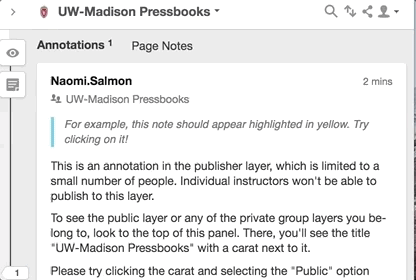
-
Try clicking on it!
Great! You're looking at the public layer now. You and your students can publish to this layer, but we encourage you not to do so because this book is a shared resource.
Instead, create a private group and teach your class how to comment and reply within it!
-
- Nov 2018
-
wisc.pb.unizin.org wisc.pb.unizin.org
-
What are two things you can do to contribute to an inclusive classroom environment?
Sample student response: I know that I can be uncomfortable when there is silence in the classroom and sometimes raise my hand to fill it right away. But some people like to think about what they want to say before they speak and need a couple of seconds of silence to do so. One thing I can do to make sure everyone participates is to make sure I'm leaving enough space for other people to share their ideas.
-
listening carefully
Sample student response: I had to give a big presentation last year and it meant a lot to me that my friends all looked at me and nodded to show me they cared about what I had to say. Participation can mean making eye contact with other who are talking even if you don't talk a lot.
-
-
wisc.pb.unizin.org wisc.pb.unizin.org
-
How do you feel about writing in books?
Open Questions:
- What is your approach to leaving marks in the books you own?
- Is your approach any different when you're interacting with library books or other shared volumes?
- Do you ever type out notes to yourself when using e-readers or interacting with a digital pdf?
Feel free to share your response to one or more of these questions by clicking the arrow button at the bottom right-hand side of this annotation.
-
-
wisc.pb.unizin.org wisc.pb.unizin.org
-
easy, unaffected self-reliance
A "barnacle": Speaking from a 21st-century perspective, I love that Marian is allowed to be a competent woman who doesn't fulfill Walter's idea of feminine beauty.
Walter, however, is very conflicted about her appearance and 'masculinity' in this scene. How does his reaction affect the way you view him as a character?
(Feel free to respond by clicking the arrow-shaped "Reply" button at the bottom of this note!)
-
-
wisc.pb.unizin.org wisc.pb.unizin.org
-
For example, this note should appear highlighted in yellow. Try clicking on it!
This is an annotation in the Public layer. You can use this layer to leave your own annotations in the margins.
You can also reply to this annotation by clicking the arrow button at the bottom right-hand side of this note.
-
For example, this note should appear highlighted in yellow. Try clicking on it!
This is an annotation!
-
-
wisc.pb.unizin.org wisc.pb.unizin.org
-
Et nous alimentons nos aimables remords, Comme les mendiants nourrissent leur vermine.
Exercice 1 (un autre exercice suit sous l'image)
<iframe allowfullscreen="allowfullscreen" frameborder="0" height="227" src="https://wisc.pb.unizin.org/oersourcebook/wp-admin/admin-ajax.php?action=h5p_embed&id=9" width="959"></iframe><script charset="UTF-8" src="https://wisc.pb.unizin.org/oersourcebook/wp-content/plugins/h5p/h5p-php-library/js/h5p-resizer.js"></script>

<iframe allowfullscreen="allowfullscreen" frameborder="0" height="455" src="https://wisc.pb.unizin.org/oersourcebook/wp-admin/admin-ajax.php?action=h5p_embed&id=10" width="959"></iframe><script charset="UTF-8" src="https://wisc.pb.unizin.org/oersourcebook/wp-content/plugins/h5p/h5p-php-library/js/h5p-resizer.js"></script>
-
-
wisc.pb.unizin.org wisc.pb.unizin.org
-
Heading
Here's a post I'm making in the public layer
-
-
wisc.pb.unizin.org wisc.pb.unizin.org
-
shown a random selection
<iframe allowfullscreen="allowfullscreen" frameborder="0" height="544" src="https://wisc.pb.unizin.org/wiwgrangerized/wp-admin/admin-ajax.php?action=h5p_embed&id=4" width="958"></iframe><script charset="UTF-8" src="https://wisc.pb.unizin.org/app/plugins/h5p/h5p-php-library/js/h5p-resizer.js"></script>
-
- Oct 2018
-
wisc.pb.unizin.org wisc.pb.unizin.org
-
Be Aware of Your Resources—By being aware of what resources are available to you—both within your team and on campus—you can save a considerable amount of time planning and developing sections. Your Team: Fellow TAs—This is the first and foremost resource you can utilize in your teaching practice. Your fellow TAs can cover a section for you if you need to miss one and they can help you work with difficult or unresponsive sections.Supervisor—Your supervisor has a wealth of experience from which you can draw. Moreover, they were part of planning the course and are the best resource when it comes to finding answers to questions like, “why is this reading relevant?” They are also the best person to go to if you have a problem with a students or one of your fellow TAs.Department—The members of your department—faculty, fellow grads, and staff—can be a vital resource. Whether it’s getting PowerPoints or notes from a graduate student who previously taught the same course or booking an alternative exam room with the staff, utilizing your department can making the teaching experience less challenging.Students—Listening to your students’ suggestions on what is working and what is not can help you to alter the course in a way that makes it accessible to everyone. If you are having trouble getting vocalized feedback you can provide an anonymous evaluation a few weeks into term asking student to clarify things they like and do not like about the discussion sections so far.
This information may be useful to excerpt. Some of the information above may be already covered elsewhere
-
-
wisc.pb.unizin.org wisc.pb.unizin.org
-
Public annotation layer
This is an annotation that is visible in the Public hypothesis annotation layer.
<iframe allowfullscreen="" class="giphy-embed" frameborder="0" height="327" src="https://giphy.com/embed/k2bbmbmvUo7gA" width="480"></iframe>
-
For example, this note should appear highlighted in yellow. Try clicking on it!
Hello there!
-
For example, this note should appear highlighted in yellow. Try clicking on it!
Hello there!
-
-
wisc.pb.unizin.org wisc.pb.unizin.org
-
For example, this note should appear highlighted in yellow. Try clicking on it!
Hello there!
-
-
wisc.pb.unizin.org wisc.pb.unizin.org
-
Directions: Fill in the blanks with the most suitable answers.
<iframe allowfullscreen="allowfullscreen" frameborder="0" height="556" src="https://wisc.pb.unizin.org/esl117/wp-admin/admin-ajax.php?action=h5p_embed&id=1" width="959"></iframe><script charset="UTF-8" src="https://wisc.pb.unizin.org/app/plugins/h5p/h5p-php-library/js/h5p-resizer.js"></script>
-
Directions: Order steps in the writing process.
<iframe allowfullscreen="allowfullscreen" frameborder="0" height="601" src="https://wisc.pb.unizin.org/esl117/wp-admin/admin-ajax.php?action=h5p_embed&id=2" width="959"></iframe><script charset="UTF-8" src="https://wisc.pb.unizin.org/app/plugins/h5p/h5p-php-library/js/h5p-resizer.js"></script>
-
Directions: Fill in the blanks with the most suitable answers.
<iframe allowfullscreen="allowfullscreen" frameborder="0" height="564" src="https://wisc.pb.unizin.org/esl117/wp-admin/admin-ajax.php?action=h5p_embed&id=1" width="958"></iframe><script charset="UTF-8" src="https://wisc.pb.unizin.org/app/plugins/h5p/h5p-php-library/js/h5p-resizer.js"></script>
-
Directions: Order steps in the writing process.
<iframe allowfullscreen="allowfullscreen" frameborder="0" height="610" src="https://wisc.pb.unizin.org/esl117/wp-admin/admin-ajax.php?action=h5p_embed&id=2" width="958"></iframe><script charset="UTF-8" src="https://wisc.pb.unizin.org/app/plugins/h5p/h5p-php-library/js/h5p-resizer.js"></script>
-
Directions: Order steps in the writing process.
<iframe allowfullscreen="allowfullscreen" frameborder="0" height="610" src="https://wisc.pb.unizin.org/esl117/wp-admin/admin-ajax.php?action=h5p_embed&id=2" width="958"></iframe><script charset="UTF-8" src="https://wisc.pb.unizin.org/app/plugins/h5p/h5p-php-library/js/h5p-resizer.js"></script>
-
Directions: Fill in the blanks with the most suitable answers.
<iframe allowfullscreen="allowfullscreen" frameborder="0" height="567" src="https://wisc.pb.unizin.org/esl117/wp-admin/admin-ajax.php?action=h5p_embed&id=1" width="958"></iframe><script charset="UTF-8" src="https://wisc.pb.unizin.org/app/plugins/h5p/h5p-php-library/js/h5p-resizer.js"></script>
-
-
wisc.pb.unizin.org wisc.pb.unizin.org
-
Click on the highlighted portion of this sentence in the web version of this text to be shown a random selection
<iframe allowfullscreen="allowfullscreen" frameborder="0" height="544" src="https://wisc.pb.unizin.org/wiwgrangerized/wp-admin/admin-ajax.php?action=h5p_embed&id=4" width="958"></iframe><script charset="UTF-8" src="https://wisc.pb.unizin.org/app/plugins/h5p/h5p-php-library/js/h5p-resizer.js"></script>
-
- Sep 2018
-
wisc.pb.unizin.org wisc.pb.unizin.org
-
tree

Likewise, this reads....
-
I’m a tree

In the 1860 volume edition, this reads: "whan that Aprille with his shoures soote"
-
Hover over the image to see the effect.
in the original text etc etc

-
-
wisc.pb.unizin.org wisc.pb.unizin.org
-
Henry David Thoreau, “Walking,” The Works of Thoreau, ed. Henry S. Canby (Boston, Massachusetts: Houghton Mifflin, 1937), p. 672. ↵
This series of footnotes has lost its italics, so if Dr. Cronon gave permission to reuse this text, we'd want to revisit this list and add them in.
-
- Jul 2018
-
wisc.pb.unizin.org wisc.pb.unizin.org
-
Supernatural
I'm intrigued to find that as of summer 2018, Supernatural seems to be an especially popular franchise for fans to combine with The Secret World of Arrietty, with sixty-six stories linking the two on Archive of Our Own alone. As the series trailer implies, the film and television show are tonally very different:
-
-
wisc.pb.unizin.org wisc.pb.unizin.org
-
I chose to publish my work under a CC-BY-SA 4.0 license, meaning that I grant others permission to copy and adapt my work as long as they observe some basic guidelines
-
-
wisc.pb.unizin.org wisc.pb.unizin.org
-
Toronto landmarks visible in many films set in the United States
This is such a ubiquitous practice that many people familiar with major cities in Canada make a sport of spotting telltale landmarks in films like Chicago, Texas Rangers, Hollywoodland, Once Upon a Time in America, American Psycho.
Kelly Nestruck's Guardian article (2007) provides a lighthearted rundown of some of these films -- https://www.theguardian.com/film/filmblog/2007/nov/01/kellynestruckthursampic
-
- Jun 2018
-
wisc.pb.unizin.org wisc.pb.unizin.org
-
or in some manner become possessed of,
Here, as elsewhere in this article, the author hints that the letter came from within the Pall Mall Gazette rather than from a reader.
-
And the cause of all this plotting and counter-plotting, the forgery, the anonymous letters, the spurious advertisement from a Dutch newspaper, the wilful suppression of Miss. Braddon’s letters; is to show—what? Only that Mr. Babington White derived the characters in his story from a French drama, and did not consider himself bound to blazon the fact upon his title-page any more than William Makepeace Thackeray considered himself bound to tell the world that he derived the broad idea of his wonderful Becky Sharp, with her tricks and lies and fascinations, and elderly adorer, and sheep dog companion, from the Madame de Marneffe of Honore de Balzac; or any more than that great writer’s accomplished daughter is bound to proclaim that the pre-Raphaelite word-painting for which she has been so highly commended is a trick of style exactly identical with, if not directly derived from, the style of Gustave Flaubert.
This litany of celebrated literary borrowings is a recurring feature of this "Remonstrance."
-
some little of the tradesman’s trick and bombast
When describing the statement of purpose Thackeray's characters gave the original Pall Mall Gazette in the novel Pendennis, "Captain Shandon" acknowledges a commercial interest and even some commercial strategy. He frames this this technique as harmless at worst and potentially even positive: we're told that he aspired to hold himself to these bombastically high standards.
-
or caused to be written
Once again, the author alleges that the Pall Mall Gazette is the party responsible for the forgery, but this time, the accusation is more direct.
-
-
wisc.pb.unizin.org wisc.pb.unizin.org
-
when a twenty-first-century instructor encourages students to write their own Shakespearean fanfiction
Kavita Mudan Finn and Jessica McCall describe just such a teaching strategy in their article, "Exit, Pursued By a Fan: Shakespeare, Fandom, and the Lure of the Alternate Universe."
Full Citation: Finn, Kavita Mudan and Jessica McCall. “Exit, Pursued By a Fan: Shakespeare, Fandom, and the Lure of the Alternate Universe.” Critical Survey, vol. 28, no. 2, 2016, p. 27-38. doi: 10.3167/cs.2016.280204. Literature Resource Center, accessed 12 Apr. 2018.
-
takes up her pen to complain that another author’s novels were unoriginal
Margaret Oliphant makes many such complaints in her reviews of Victorian fiction, most notably her Blackwood's Edinburgh Magazine article "Sensation Novels" (May 1862). This project discusses "Sensation Novels" at some length in my first chapter.
-
many forms
This includes a 1997 film featuring John Goodman, Mark Williams, Flora Newbigin, and Tom Felton: https://www.youtube.com/watch?v=lgZQ8gyUlwI
-
The Secret World of Arrietty
-
-
wisc.pb.unizin.org wisc.pb.unizin.org
-
submitted to Wikimedia Commons
Intriguingly, this Wikimedia Commons page also features image history and usage information, including the fact that this image was "assessed under the valued image criteria and is considered the most valued image on Commons" relating to Mary Elizabeth Braddon portraits. As of the summer of 2018, this image is listed as used in 12 wiki pages related to Mary Elizabeth Braddon.
-
-
wisc.pb.unizin.org wisc.pb.unizin.org
-
highlighted in yellow
This is what an annotation looks like.
-
highlighted in yellow
This is what an annotation looks like.
-
- Mar 2018
-
wisc.pb.unizin.org wisc.pb.unizin.org
-
Kenneth Grahame
As H. J. Jackson observes in Marginalia: Readers Writing in Books, Grahame (of The Wind in the Willows fame) later republished this article in his volume collected works, Pagan Papers).
-
sedgy with citations.
Burton: folios with "their majestic stream of central print overflowing into rivulets of marginal notes, sedgy with citations." (The Bookhunter, p. 117).
-
Bookhunter
Blackwood's edition of John Hill Burton's The Bookhunter
-
Hunt, in his suggestive Talks About Art,
Here, Grahame refers to William Morris Hunt's work, Talks About Art
-
-
wisc.pb.unizin.org wisc.pb.unizin.org
-
Hypothes.is annotation sidebar
To contribute a comment in the margins of this guidebook, highlight a section of this page. You will see two options pop up next to your selection:

Click "Annotate."
If you don't have a Hypothes.is account, you'll be prompted to make one. (This is free.) Once you've entered your email and logged in, enter your comment, and then click "post to public."
-
-
wisc.pb.unizin.org wisc.pb.unizin.org
-
Hypothes.is annotation sidebar.
To contribute a comment in the margins of this guidebook, highlight a section of this page. You will see two options pop up next to your selection:

Click "Annotate."
If you don't have a Hypothes.is account, you'll be prompted to make one. (This is free.) Once you've entered your email and logged in, enter your comment, and then click "post to public."
-
-
wisc.pb.unizin.org wisc.pb.unizin.org
-
Hypothes.is annotation sidebar.
To contribute a comment in the margins of this guidebook, highlight a section of this page. You will see two options pop up next to your selection:

Click "Annotate."
If you don't have a Hypothes.is account, you'll be prompted to make one. (This is free.) Once you've entered your email and logged in, enter your comment, and then click "post to public."
-
-
wisc.pb.unizin.org wisc.pb.unizin.org
-
Hypothes.is annotation sidebar.
To contribute a comment in the margins of this guidebook, highlight a section of this page. You will see two options pop up next to your selection:

Click "Annotate."
If you don't have a Hypothes.is account, you'll be prompted to make one. (This is free.) Once you've entered your email and logged in, enter your comment, and then click "post to public."
-
-
wisc.pb.unizin.org wisc.pb.unizin.org
-
Hypothes.is annotation sidebar.
To contribute a comment in the margins of this guidebook, highlight a section of this page. You will see two options pop up next to your selection:

Click "Annotate."
If you don't have a Hypothes.is account, you'll be prompted to make one. (This is free.) Once you've entered your email and logged in, enter your comment, and then click "post to public."
-
-
wisc.pb.unizin.org wisc.pb.unizin.org
-
Hypothes.is annotation sidebar
To contribute a comment in the margins of this guidebook, highlight a section of this page. You will see two options pop up next to your selection:

Click "Annotate."
If you don't have a Hypothes.is account, you'll be prompted to make one. (This is free.) Once you've entered your email and logged in, enter your comment, and then click "post to public."
-
